Development Story: SRAM's New Eagle Transmission
For the last few months, spy shots of SRAM's latest generation of drivetrain components have been popping up all over the internet. But playing guessing games and getting the full details are two separate matters.
At the end of 2022, SRAM invited media outlets to take part in their biggest product introduction the company's history – volume-, components-, and pricepoint-wise – as well as offer a rare behind-the-scenes look into their testing facilities in Schweinfurt, Germany, which we will cover in another article.
25 years ago, Sachs, with their headquarters in Schweinfurt, Germany, was acquired by SRAM. Since then, the Schweinfurt office has become the center of external drivetrain development on the mountain bike side, working closely with their development center and factory for chains in Portugal. Additionally, all cranks are being designed in the former Truvativ headquarters in San Luis Obispo, California. With over 3,000 people in the company, more than 200 of those were involved in the model year 2023 drivetrain project in different locations.
The engineers on SRAM's team are all riders and contribute at least 50% of the input for new concepts and ideas, sometimes resulting in game-changing innovations. When the team first started exploring concept ideas six to eight years ago, they also recognized the growing importance of e-MTBs and their increased stress on equipment, which has influenced the new lineup.
Looking a few years back, the initial introduction of SRAM's single chainring 1x11 drivetrain groups sparked plenty of discussions, with the timing of the Eagle launch and the introduction of the AXS wireless electronic technology marking key moments in the timeline. All were pursuing the goal to eliminate barriers and make the lives of riders easier. Again, this time around, the team looked at other ways to make the drivetrain even better, including discussions about adding another gear to total 13 speeds, expanding the range and making it lighter, which, in the end, didn't turn out to be the direction that SRAM wanted to take the group.
At the end of the day, three feature target points were defined for developing the new drivetrain products: robustness and reliability, shifting under load, and ease of use.
The Trojan Hanger
By the time Product Manager Andreas Kölsch joined the project in 2018, the industrial design engineers came up and presented the concept of a more robust and beneficial way of attaching the derailleur to the frame in a more direct interaction with the cassette with benefits such as shifting under load and potentially zero adjustment. Bringing together what belongs together was obviously a smart idea, but they somehow had to convince bike brands in the industry that they needed a new frame interface to make that idea happen. A daunting task, as everyone loves the new but everyone hates to adapt to change.
The Advanced Development (AD) department, which was given free rein to explore outside of normal projects, came up with the idea of a Universal Derailleur Hanger that provided a platform for the new interface the new shifting attachment would require. Introduced in 2019, some frame manufacturers were initially skeptical about adapting the new system without being able to disclose the bigger scope to everyone at first, but by now there are more than 260 frame models available, with a few million UDH units shipped.
While the UDH hanger did offer a lot of benefits already – like easier worldwide availability as a replacement part, better structural integrity and standardized positioning, no matter what brand of derailleur you used – the Universal Derailleur Hanger sort of acted as a Trojan horse to get the mount into the market and prepare for SRAM's new shift mount system – the Full Mount attachment method.
Over the years, SRAM discovered that over half of the drivetrain problems had to do with the derailleur hanger itself as well as of course the centuries-old structural design of rear derailleurs. Ergo, one of the reasons for the transmission project was to remove the elements of user variations and frame variations from the equation.
With three screws and millions of combinations, in the end there was only one setting that worked correctly. Getting rid of all adjustment screws and addressing the hanger issue results in a huge reduction in problems. With a long list of over 200 root causes for possible problems in their warranty department, it was clear to them that this was the right way to go for creating the latest generation of SRAM's drivetrain components.
In order to differentiate the old from the new groupset, components of the new generation are called and marked T-Type. Almost none of the T-Type components are compatible with old parts. Only Eagle Transmission T-Type chainrings are backwards compatible with Eagle chains, so can be used on the current Eagle drivetrains. Non-T-Type Eagle chainrings will not work with the new Eagle Transmission chains, however.
Derailleur & Mount Design
In order to eliminate adjustment screws from the derailleur altogether and use a frame/axle mount connection with coaxial mounting instead, one of the key elements in making that possible is the new B-washer connection to the frame. Quite a challenge to design, because it had to not damage the frame itself, stay secure, and needed to be able to rotate when the bolt is opened for setup. The top pulley now rotates around the cassette at a constant gap, eliminating the in-between offsets and making it possible to remove the B-screw altogether.
As the position of the upper pulley is important for shifting performance, SRAM developed an inline cage with a kink for more tire clearance. It is not sitting in a perfect line, but it is pushing the lower pulley in line with the chainring, with the benefit of the upper pulley always sitting straight to the cassette for better shifting performance. This angled position is not putting any significant extra load on a chain, as the shifting process puts much higher loads on the chain in comparison.
Between the wheel and frame, the hub directly contacts the derailleur so the positioning between hub, cassette and derailleur is very exact. Knowing where the cassette sits relative to the rear derailleur, SRAM could specify the range of motion exactly, allowing SRAM to get rid of limit screws that a regular derailleur requires. The rear derailleur also has a contact point to the cassette that further prevents it from going into the spokes. To the outside, there is also an internal stop point inside the mechanism to keep the derailleur from dropping the chain in between the cassette and frame.
While a derailleur hangar was initially designed to bend in order to take the loads of a crash, the new interface is directly connected to a bike's thru-axle, which makes it very robust against side and frontal impacts and prevents it from transferring most of the crash energy directly into a frame.
The lower so-called Magic Pulley that's available on the XX and XX SL derailleurs – a two-part design where the outside teeth can still keep spinning in case an object becomes lodged in its inner spokes – adds another failsafe to not damaging components out on the trail.
After consulting with manufacturers about their desired specs and looking for more tire clearance, the design also makes Super Boost obsolete by moving the position of the cassette 2.5 mm out and establishing a chainline of 55 mm with a regular 148 mm Boost hub.
The coaxial mounting interface with the B-washer that slides into a UDH-prepared frame also holds the threads to accept the frame's regular axle, binding the whole system together. The new mount makes the derailleur much stonger in the event of side impacts.
The overload clutch within the B-washer allows for the derailleur to fold back in case of a strong hit from the front or folding back when the axle is released. The new mount design works with all bike concepts, including Split Pivot designs. Specs for necessary frame clearance of the derailleur, so that the rear derailleur can rotate backwards, are available for frame designers.
The design team has also tried to make the overall design slimmer, by about 8mm, and therefore slightly improving clearance to obstacles on the side. It doesn't sound much in theory but is supposed to make a noticeable difference on the trail.
A very welcome feature comes in the form of general easier reparability of the derailleur. For maintenance, the counterturn feature of the main body and cage allows for easy toolless disassembly of these two parts, opening up the cage damper assembly. The clutch damper has been improved, with the damper being stronger and more robust to reduce chain slap and increase compatibility with higher torque parts. There is only one damper for all groups with one preset retention strength. The cage can be purchased as an aftermarket item. This feature also allows for quick and easy cross-compatibility of parts between the groups.
Integrating another design aspect, the industrial design team was asked what it would look like to design the most durable derailleur. They looked at scratched knuckles from old AXS systems and decided to put the stronger elements in the front and use durable materials, such as aluminum with a machined surface. They also introduced replaceable plastic guards to further protect the structure. To achieve this, they had to come up with a new outer link design that could be detached with two bolts. The plastic parts do not have structural importance, but serve as a protective layer and can be swapped out easily. They are designed to stick out and take the first hit, with the team also considering sustainability, by creating a product that can be used for as long as possible and remain on the market for a long time.
The cage lock feature for easier wheel removal is still part of the design, but there is a new Setup-Key that is required during setup. More to that later in the installation part of this article.
There is also an extension cord available to directly connect the AXS battery feed into the main battery from e-bikes for Bosch systems, of course at the cost of having to deal with the negative aspects of cables. Other motor systems can be integrated by adapting an alternative cable solution.
Cassette
While some customers were asking for 13 speeds, SRAM's engineers decided to stick with the tried and tested 12-speed configuration as they've already achieved a generous range with 520 percent on a 10-52t cassette. On the new cassette, they did however fine-tune the gear spacing slightly for a more gradual gear jump at the top. It now features a 38- instead of a 36- and a 44- instead of a 42-tooth gear, delivering a setup of 10,12,14,16,18,21,24,28,32,38,44,52 instead of 10,12,14,16,18,21,24,28,32,36,42,52.
All cassettes within the Eagle T-Type ecosystem are the same in terms of cog-spacing, gearing and cross-compatibility.
During the design process, it was not enough to fully rely on CAD-work – not being able to fully imagine how the chain is moving and simulate all influences – therefore SRAM had to machine samples in their shop that they could grind on manually in a detail-oriented process as well as to conduct tolerance testing.
Structurally, the cassette has also changed in order to save weight while not sacrificing stiffness or robustness. Now the first three cogs form the so-called Spider Cog. On XX SL all three cogs are made of aluminum, with XX only cog 1 is made from aluminum, the other steel. Gears 4-12 feature a fully machined hardened steel X-Dome architecture.
The biggest three cogs are produced using stamping technology without machining, a complicated high-end manufacturing process that is hard to achieve in this form, since it's hard to control and realize the precise dimensions in a stamping process. The process for those three cogs starts as plates with cut-outs. For aluminum, the raw material at this point is pretty thick, with the form and teeth being pressed into shape during the stamping process. For steel, it's not possible to compress a thicker structure into thinner teeth so they sort of reversed the process with windows in the front to press material to the back, creating thicker teeth from thin material.
The Spider Cog is made using CNC machining, known from the current Eagle system.
In terms of shifting behavior, the biggest change of the new group is that the system always knows where the chain is in relation to the cassette, not just on which cog but the orientation of the chain on the cog with its outer and inner links. Similar to the narrow-wide tooth setup on a chainring, this X-Sync technology now also finds its way to the cassette to prevent the chain from unwantedly falling down.
You can hit the trigger as many times as you want, with the system delaying the process as long as it needs to shift from lane to lane in due time. This might produce a slight delay in shifts, although with the benefit of not having to reduce power output before shifting. AXS helps with only moving to the next lane when it is ready, but cable-induced shifting would still create a similar effect, although you might want to be a bit more careful with how many times you'll continuously trigger the gear jump as tension will build up
.
In case the chain should really jump out of its correct position, which doesn't seem to be easy to achieve, it automatically jumps into its correct positioning on the cassette as soon as it turns.
Thanks to all these improvements that were made possible by the new derailleur mount, you can now truly shift under full load, even on an e-bike, which, needless to say, is quite the big deal.
Chain
Being able to shift under high load at all times also had some influence on the chain now featuring a Flattop design to maximize shifting performance and robustness. With more space on the driver body because of the direct mount system SRAM was able to use the additional space they gained to increase the thickness of the cog and chainring teeth, improving the system's overall lifespan. A version with hollow or regular pins, depending on group and/or use is available.
Cranks
The XX SL and XX lineups still include carbon cranks, although a completely new type of XO aluminum cranks are somewhat the highlight of this generation's crank series. These cranks are forged out of a single piece – including the axle – eliminating the need for a press-fit connection. This makes them lighter weight by reducing the amount of overlap material required for a press-fit connection and reduces the chance of failure by taking the joint out of the equation.
After receiving the new design idea from the industrial design department, the process for creating these cranks started with a regular GX crank arm and involved drilling a hole in it. Using a generative analysis tool to analyze the cranks when loaded up in the FEA (Finite Elements Analysis) to show where material is more and less useful helped them assess further areas for weight reductions like a hole drilled into the end of the crankarm going all the way up to the core, basically hollowing out that section. They also used additional machining on the drive side arm.
In the end, SRAM wound up with an overall weight savings of 26 grams over the lightest aluminum arm they had until that point.
Chainring & Bash Guards
While all T-Type chainrings offer a wider tooth design with improved durability, the real news comes in the form of split chainring guards that can now be mounted directly to the chainring – therefore not requiring an ISCG mount – in either a double or single mounted configuration or not at all.
With not many restrictions given in the initial design brief, the first design, at least for the XX guard, was an integrated one-piece machined guard. After some initial testing the team was not satisfied with the results as they had to add a lot of weight to be robust enough for high impacts.
After quite a few iterations they ended up splitting the guards and making them removable, and not appear like a piece is missing when not mounted. Once they decided to follow that route it became a bit more complicated, stacking up the tolerances and figuring out the amount of coverage and necessary gaps between chainring, teeth and the guard. If an impact did manage to severely damage the guard, it can easily be removed trail-side using a T25 tool.
Power Meter
After forming the idea of creating a XX power meter crankset version with two pieces it took a bunch of prototypes to figure out the best thread form and thread pitch that was needed for this type of application. After several iterations, they ended up with a seamless integrated design that could be taken apart with the help of a special Threaded Chainring Removal Tool. A backup pin keeps the system from unwanted unthreading. When the chainring wears out you simply unthread the chainring from the proprietary spider and swap that part for a new one. The proprietary chainrings with Thread Mount come in sizes from 32t to 38t.
Pod Controller
The electronic AXS Pod Controller was created by a team that was challenged by the question of 'If Amazon can sell RC helicopters with remotes for $17, why isn't SRAM able to create an electronic controller that was almost half the cost and half the weight, but with greater adaptability?' The ultimate goal was to create a nicer finish and ergonomic benefits with the team also focusing on finding more cost-efficient solutions for the parts.
In the end, SRAM went with a modular design, splitting the unit into two parts. The sealed power-washable lower part, or ECM (Electronic Controller Module), houses all the electronics including Mod button and a CR2032 battery.
The top part, or HMI (Human Machine Interface) can be attached with two versions to choose from: The Pod and Pod Ultimate. Ultimate comes with a nicer finish and ergonomic benefits. The tool-free removable rubber caps on the Ultimate version come in two different shapes that can be used individually or in pair (concave and convex). Due to the modularity of the system, the Pods and caps can be used on the right and left-hand side.
The regular Pod comes at a value price point with straight button surfaces and no customization options.
Two clamp types are available. The Infinity Clamp allows for a secure connection with more adjustment range than the old shifter system would have ever allowed for and is 22.2mm in diameter, fitting all bars. On the other end you can enter the Pod, which is using the same 22.2mm interface. Therefore, you can rotate it around two axes with just one bolt using a T25 tool. The Infinity mount can be flipped to the left and right side with just the logo showing upside down.
The MatchMaker X solution involves attaching the MMX bridge to the MMX clamp of the brake lever. In this case there is a dedicated left- and right-hand sided version of the bridge available.
The Pods can be customized with button mapping through the AXS app, which allows you to map any AXS component. The Pods are almost half the price of the previous AXS shifter and weigh slightly less than 50 grams. You can still use the current AXS shifter versions, which will still be available, with the new T-Type components, or you can use the new EC shifter with the old AXS derailleur version.
The Setup-Key (a small key beneath the knuckle that can be set to position A or B) on the derailleur locks and creates a fixed chain gap. Until now, the setup required for the bike to be set in sag (which was quite the pain in the ass so most people didn't bother with it, leading to a bad setup). This is a thing of the past, all you have to do now is to determine which setting your frame falls into and set up the drivetrain in the bike's fully extended state, as you would find on a workstand.
Except for hardtail bikes, which are always set up in position A, it is not as easy to put all full-suspension bikes in category B, as the setting for full-suspension bikes is determined by how the chain gap changes between full extension and settling at its sag point. By setting up the drivetrain with this system, you are setting it up to work perfectly when seated in sag, not for when the suspension is unloaded.
At the time of launch, there will be a comprehensive database of all full suspension bike models with UDH mount within the SRAM AXS app to help customers determine the correct number of links on the chain for their bike and also if they need to use setup position A or B. As a worst-case scenario fallback option, there's also a manual way of measuring things out.
During the installation process the chain has to be placed in gear seven (counted from the inboard side) of the cassette – an optical feature, a red ring, is integrated in the cassette, indicating that setup position. Torque for the cassette is 40 Nm. The chain needs to be taut when mounting.
The derailleur then can be fixed with an 8 mm Allen key (same as the crankarm). The torque to fix the derailleur to the frame needs to sit at 35 Nm, so you'll require a big torque wrench for the assembly. Once the derailleur is fixed, with the regular frame axle holding it in place in its predetermined setup position, it applies a certain amount of friction that still allows the derailleur body to swing out of the way in case of a high loaded frontal impact.
During the ride, the derailleur body is not swinging forward or backward. The frame's axle (there is no special design necessary to be compatible with the new hanger system) should be tightened according to the regular torque specification of that axle. The derailleur will always fall back into its setup position when the axle is tightened, no matter how many times you remove the frame axle to swap out a wheel, for example.
If the chainring size is changed, the setup may have to be repeated.
For its launch, two price points of the new T-Type generation will be available: XX and X0, with the 1 having been removed from the name as it's quite obvious by now that multiple chainrings will not return to the world of mountain biking. XX and X0 options are no longer defined as catering to XC or enduro use but each can be tweaked to intended riding conditions. For that, three use cases have been defined: XC/marathon, trail/enduro and e-MTB.
Within each group you can pick variations of some of the components catering to those use cases. Only wireless AXS technology is offered for the XX and X0 price levels, with no more cable-actuated options available, although theoretically, it is technically possible that the T-Type system could see some cable-actuated iterations on lower priced models.
T-Type XX and X0 components can be mixed between each other. The old system will still be in production to make sure that frames without a UDH mount, or better said systems using a regular derailleur hanger, will still have components to run on for many years to come.
SRAM is still tight-lipped about lower-price point models, but looking at their history a trickle-down effect for other groups is to be expected in the future.
XX Eagle (T-Type)
The top group XX is designed to be as light as possible, making a distinction between XX SL (the lightest versions with some components not suitable for e-bike use) and XX components.
XX SL:
The XX SL derailleur features a carbon cage with the outer link plates being more delicate, offering a thinner cover. Due to its new design structure, it weighs a bit more than the current version. Weight: 440g. MSRP: $650
One of the highlights is the XX SL cassette which features three aluminum cogs (gear 1, 2, 3) that are pinned together. Even with more teeth in the system, it's still about 15 grams lighter than the old version. This version is not e-MTB compatible. Weight: 345g. MSRP: $600.
The XX SL Flattop chain features cut-outs and hollow pins, making it five to six grams lighter on average. Again, this version is not approved for e-MTB use. Weight: 240g. MSRP: $150.
The new XX SL Eagle AXS Transmission Power Meter Crankset power meter solution now features a thread-on chainring integrated with XX SL carbon crankarms, saving about 31 grams over the old 4-bolt solution. MSRP: $1050.
Even though the T-Type generation is more robust with the derailleur being about 100g heavier, if you compare the complete current XX1 group including power meter and controllers to the new XX SL group, the total weight savings of the new generation comes to more than 100 grams, even though it was not the primary goal to achieve this.
XX:
The XX derailleur comes with a silver cage with two cut-outs, hiding scratches well, as well as a skid plate instead of just a cover. Also, the outer link is more exposed. Weight: 465g. MSRP: $650
The XX cassette uses the same structure as XX SL, with cog 1 still being made of aluminum but cog 2 and 3 on the Spider Cog being made of stamped steel without cut-outs. Therefore, this version is also e-MTB compatible. Weight: 380g. MSRP: $550.
The XX Flattop chain comes with hollow pins and a hard-chrome finish. Weight: 247g. MSRP: $125.
The optional chainring bash guards are made from aluminum.
XX cranks are available with a power meter as well, housing the BUB-PWR, a left-side measuring device subtly housed within the DUB crank spindle. With cranks, the MSRP is $750.
XX E-Bike:
For perspective, currently more than 60% of Eagle transmissions (with a higher percentage at lower price points) are equipped on e-bikes. The XX eMTB configuration uses the regular XX cassette and XX chain. You can basically run any derailleur that you like, although the non-SL versions with skid plates and stronger outer links make more sense in terms of added durability.
New crank and chainring solutions for Bosch, Brose and Shimano are available. For Bosch and Brose, the gap between crank and chainring has been addressed with a Gap Cap solution – permanently attached to the crank arm – which nicely covers the area in between. A lightweight XX Eagle E-MTB carbon crank option with foam core is part of the lineup.
A new two-piece design XX chainring is made of steel with an aluminum carrier spider to save some weight while still delivering the longevity needed by e-bikes. No bash guard protection is available, as the chainring rotates independently of the crankarm and therefore can't be positioned correctly in its split setup.
X0 Eagle (T-Type)
X0 sees a repositioning of its price point.
The X0 derailleur's architecture matches that of the XX although the skid plate and outer link are a little bit different. Its aluminum cage is black with a single cutout. Weight: 475g. MSRP: $550
The X0 cassette uses same structure as XX and comes with a different finish. Weight: 380g. MSRP: $400.
The X0 chain also features a Flattop design, is fully approved for E-MTB use with solid pins and comes in a Dark Polar finish. Weight: 256g. MSRP: $100.
There is a new forged lightweight X0 aluminum crank made from one piece, including the axle. The crank is available in 165, 170, and 175mm lengths. MSRP: $300.
The all-aluminum crank comes power meter ready, to house the BUB-PWR, a left-side measuring device subtly housed within the DUB crank spindle. The set price with X0 cranks is MSRP: $400.
Chainring bash guards are made of a composite material.
There's no carbon crank version within the X0 group but there's also a specific X0 Eagle E-MTB crank compatible with Gap Cap for Bosch and Brose motors available. Lengths are 160, 165 and 170mm. MSRP: $150
Pods
Pods don't really fall into a group, rather being separated by Pod Ultimate and regular Pod, although you could argue that the Pod Ultimate suits the price point of XX better.
The AXS Pod Controller Ultimate only weighs about half of the current versions of AXS shifters at 48g and features replaceable caps. MSRP: $200.
The AXS Pod Controller has no customization features and comes with flat caps. MSRP: $150.
Race-Proven Already
SRAM has many customers with different needs. Robustness and reliability were a given, and with more and more e-bikes entering the fray, shifting under load became more important than ever. But they also wanted to cater to athletes who may have different requirements, such as needing a drivetrain that is as light as possible. While the new XX Eagle T-Type derailleur is about 100g heavier than the old version, overall system weight actually saves 100g.
The fact that the sport of XC has been changing a bit and asking more and more from riders and equipment has furthermore played into SRAM's hands. Tires became more puncture-resistant, dropper posts came into play and suspension travel grew slightly to add a bit more comfort and robustness for added security. So it wasn't just that the general public could benefit from the new system's benefits - hardcore racers could as well.
Upon Nino Schurter and other pro racer's first reaction, when they quickly realized that shifting under load has significantly improved and that they could push the system harder under full load all the time with less chance of failure, even in its pre-production state, Nino gave it the race-ready stamp of approval. It was pure coincidence that when he and other pro racers were seen using the new group in public at the 2022 XCO World Championships in Les Gets, he slid out hard onto the driveside in the finish line area, resulting in no damage whatsoever, and he was able to catch up to the competition to take the win.
 When did SRAM first start working on this project?
When did SRAM first start working on this project?
The Advanced Development Department probably started thinking about it five or six years ago. They are kind of working independently of what everybody else is doing here and they have more time to explore new ideas. But pretty much as soon as we got finished with Eagle AXS we put more resources into the project to go into more detail and do the full development.
 In what way did Covid influence the development process?
In what way did Covid influence the development process?
Covid made the whole development harder as we are making our parts in Taiwan. Usually in the development phase the team goes over there two to three times a year, which was not possible. So, it was also a huge achievement also by the supporting team in Taiwan to make everything work together with the suppliers.
 Did the project take longer because of that?
Did the project take longer because of that?
One of the reasons for taking longer was that we couldn't travel there and the other reason was that they were completely busy with making stuff from the current production. Usually we make pilot runs so we go to the production line to make trial runs of the new parts but if they are more or less running at 200% capacity there is no time for doing something like that.
 Are there moments during development where one team is telling the other that some feature cannot be incorporated, making the end consumer miss out on a revolutionary feature?
Are there moments during development where one team is telling the other that some feature cannot be incorporated, making the end consumer miss out on a revolutionary feature?
I think all our team members are super happy with the end result but there are definitely phases where issues need to be discussed between different teams to find a solution. You have to figure out if there are new features that need to be added to the design or if the industrial design needs to be positioned better. But in the end, everybody is aware that it all has to go together. Maybe a few years ago, there was more competitive attitude, but it was actually kind of my job to bring the teams all closer together to make it all happen.
 Looking at all the new features, where do you go from here?
Looking at all the new features, where do you go from here?
We have been working on that project for quite a while now and since that state that we've put it in production now, we have some ideas already but of course don't talk about them. Even internally, even after XX1, we thought that's all that's needed for mountain biking and what else can we do? Then came Eagle and we thought, all right, that's 12-speed and the range is sufficient, but there are always ideas that pop up within the company.
The industrial design department is constantly challenging what we have right now. Or better said, not only them but every engineer is doing that. They ride themselves, they get feedback from external sources, from racing, as we go to races and watch what's going on there. See what the teams are doing to make stuff better, tweaking. So, there will definitely be some more advancements. Maybe not huge advancements, like with this step, but we keep improving.
 Looking at some of the projects from other companies in terms of gear box-driven bikes or such, is that something that SRAM might be seriously considering looking into and explore if there could be a gear box for mountain bikes in terms of efficiency or weight that meets your criteria?
Looking at some of the projects from other companies in terms of gear box-driven bikes or such, is that something that SRAM might be seriously considering looking into and explore if there could be a gear box for mountain bikes in terms of efficiency or weight that meets your criteria?
We are definitely thinking about it. The efficiency is probably hard to avoid if you have that many gears that are necessary to make the gearing possible that you need on a mountain bike drivetrain. So, we keep thinking about it and have it on the radar, but we need to decide where we put our resources. At least last year there was a clear focus on this project. But let's see what the future will bring.
Author Info:
Must Read This Week
Sign Up for the Pinkbike Newsletter - All the Biggest, Most Interesting Stories in your Inbox
PB Newsletter Signup
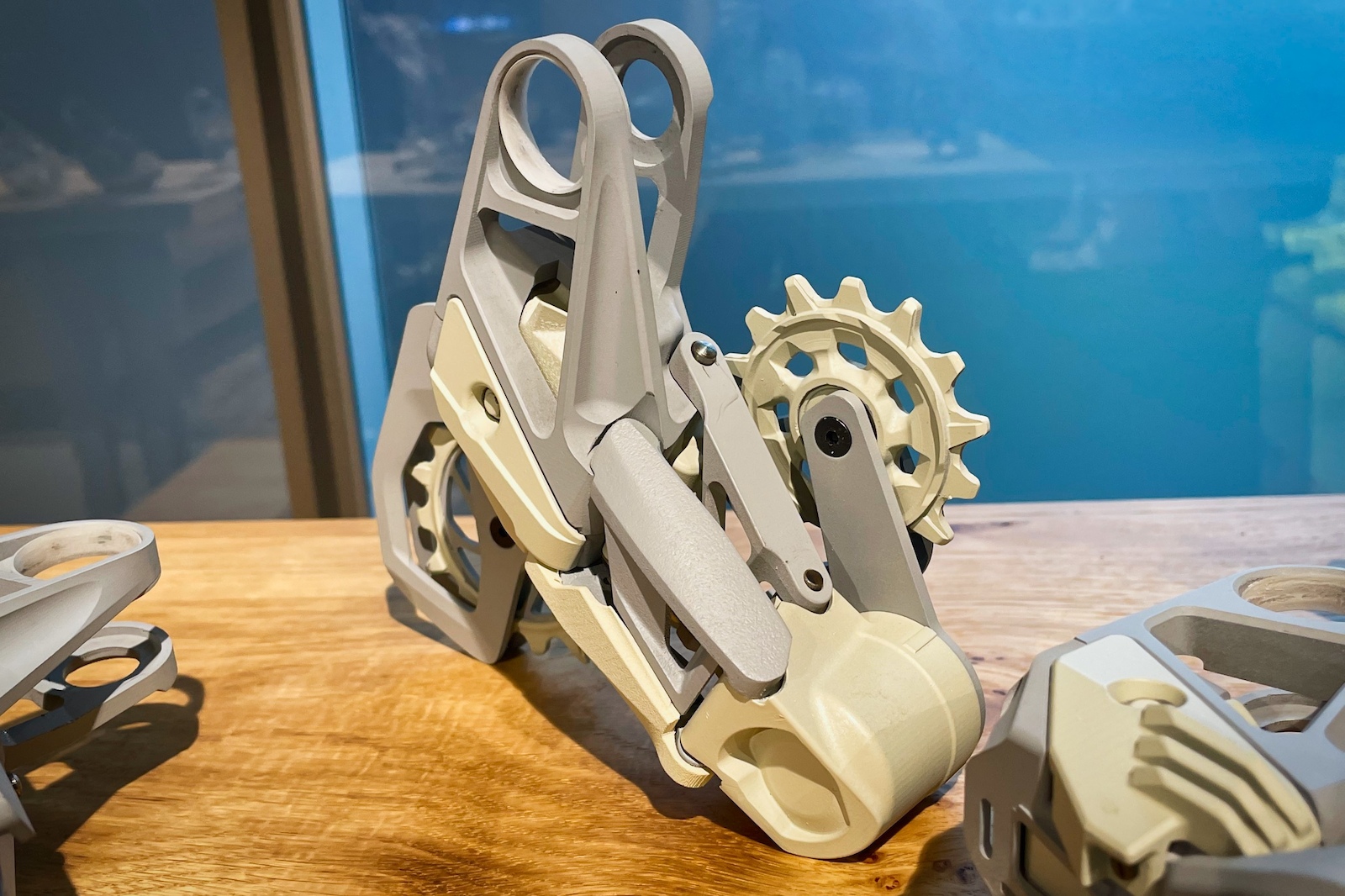
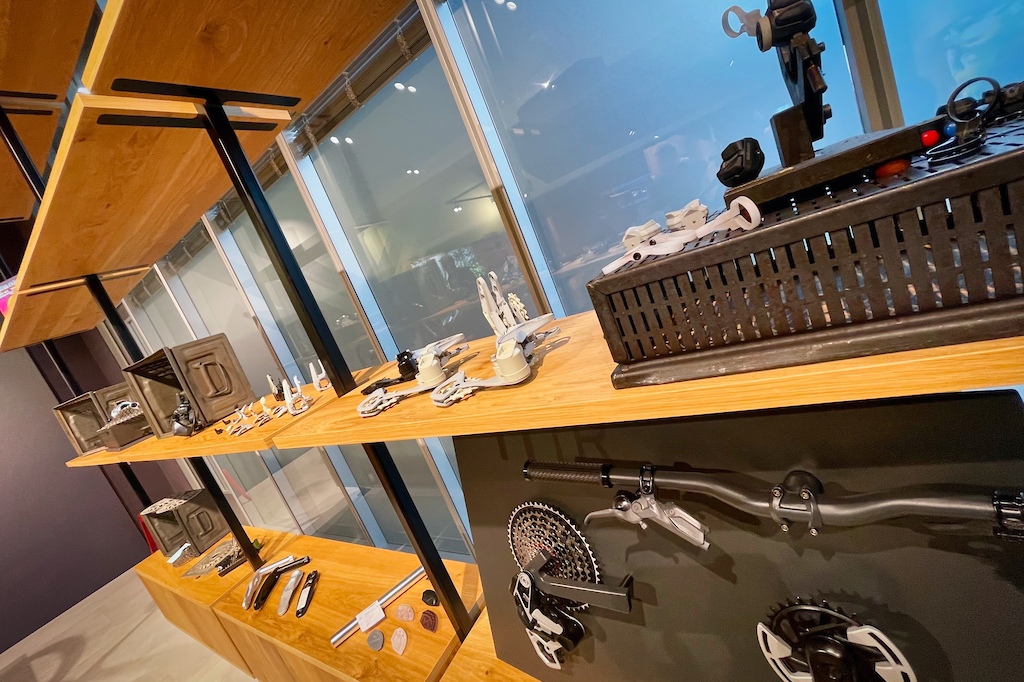
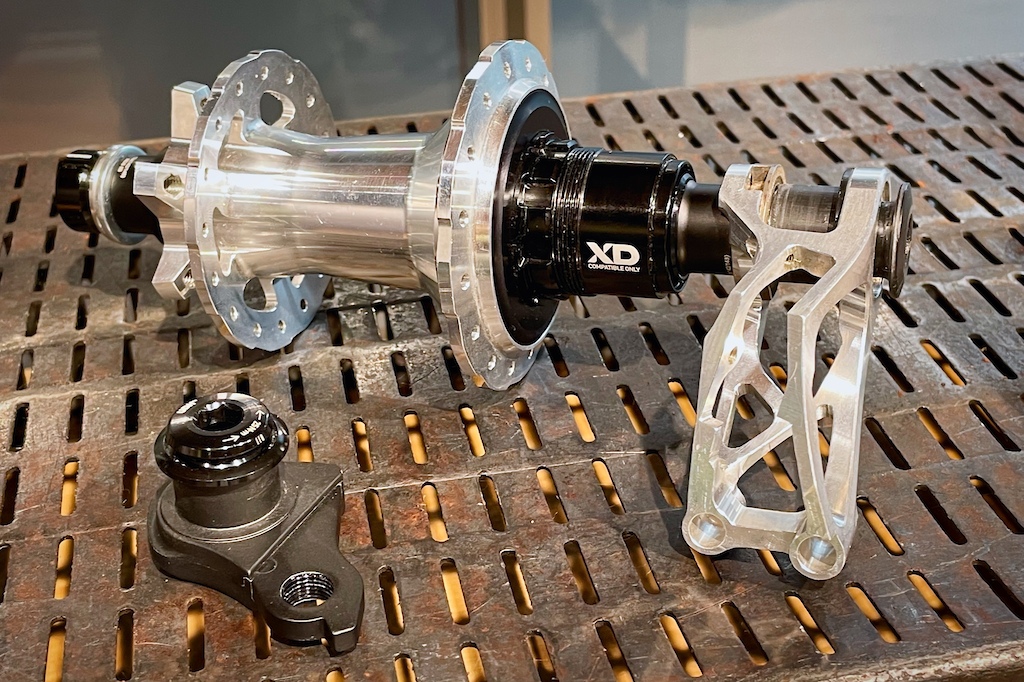
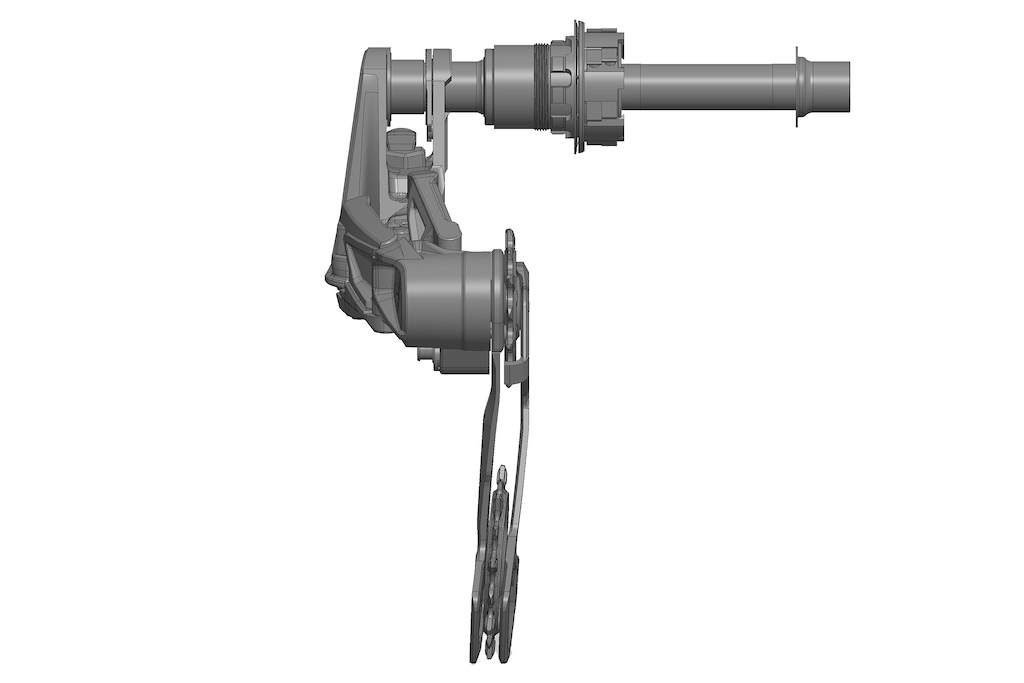

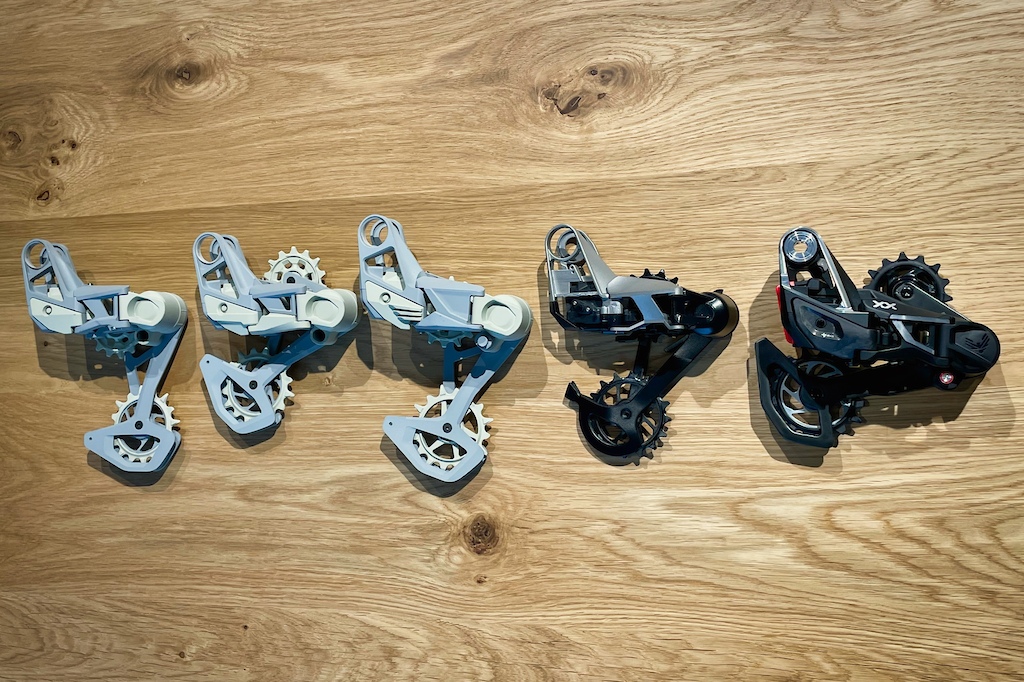
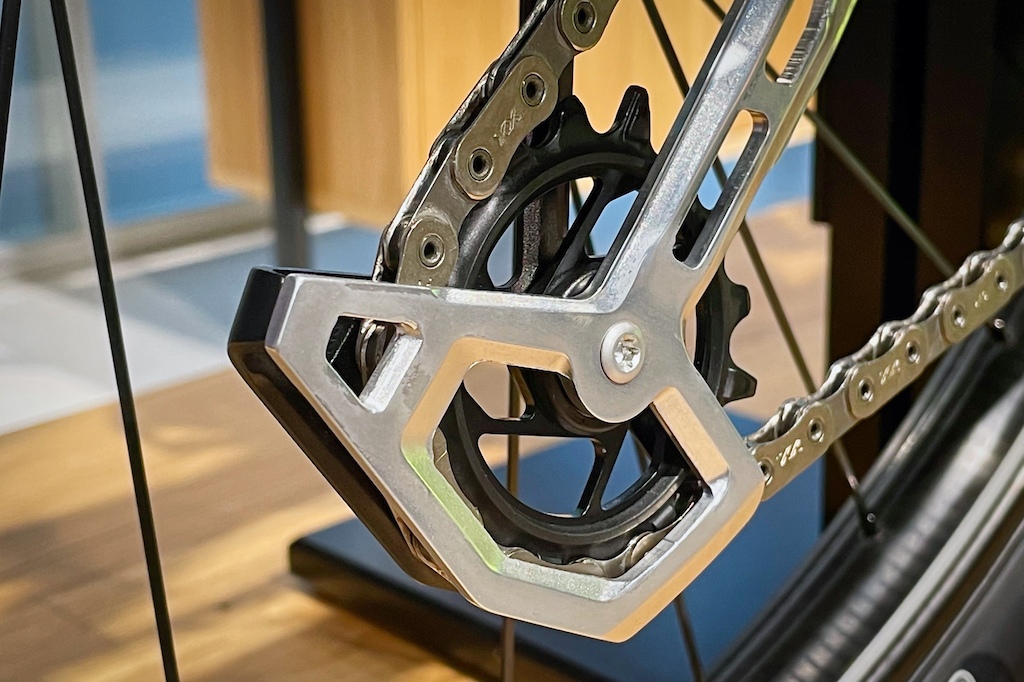
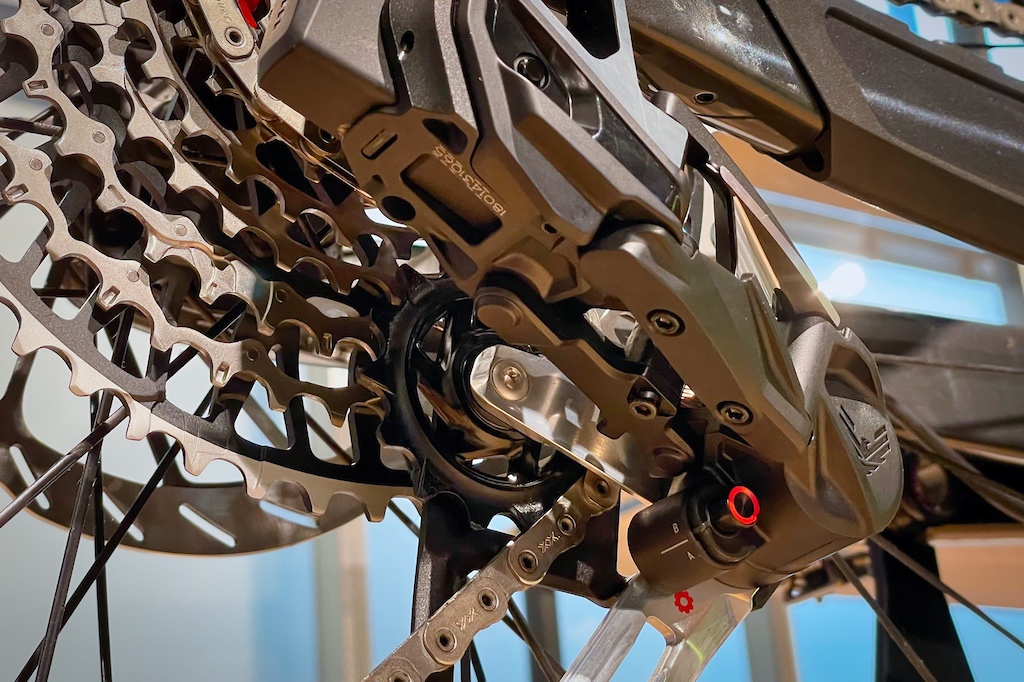


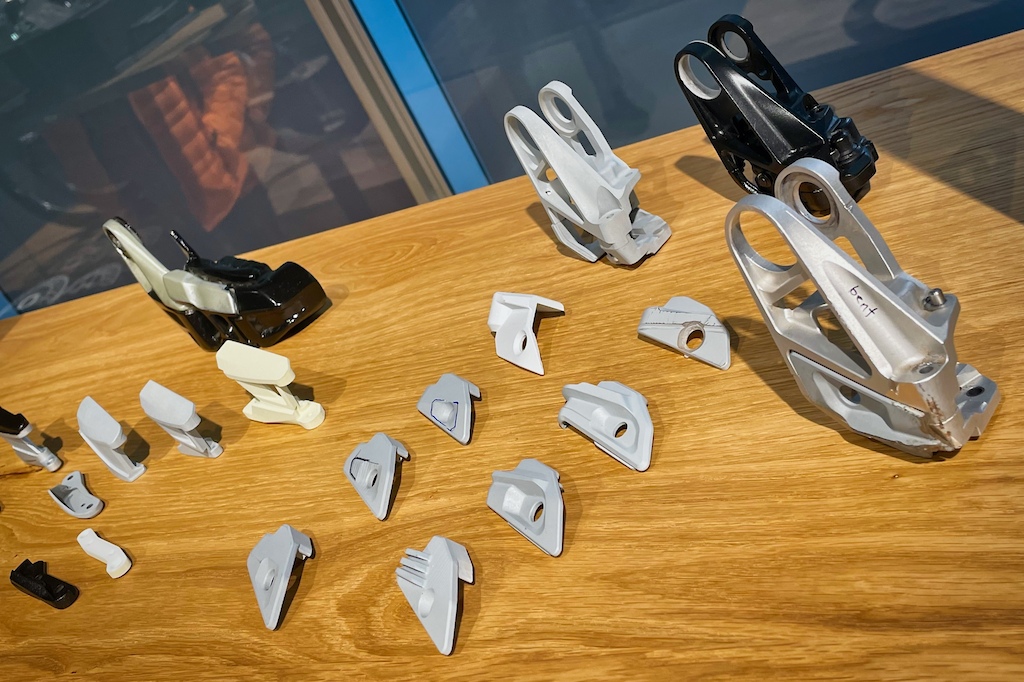
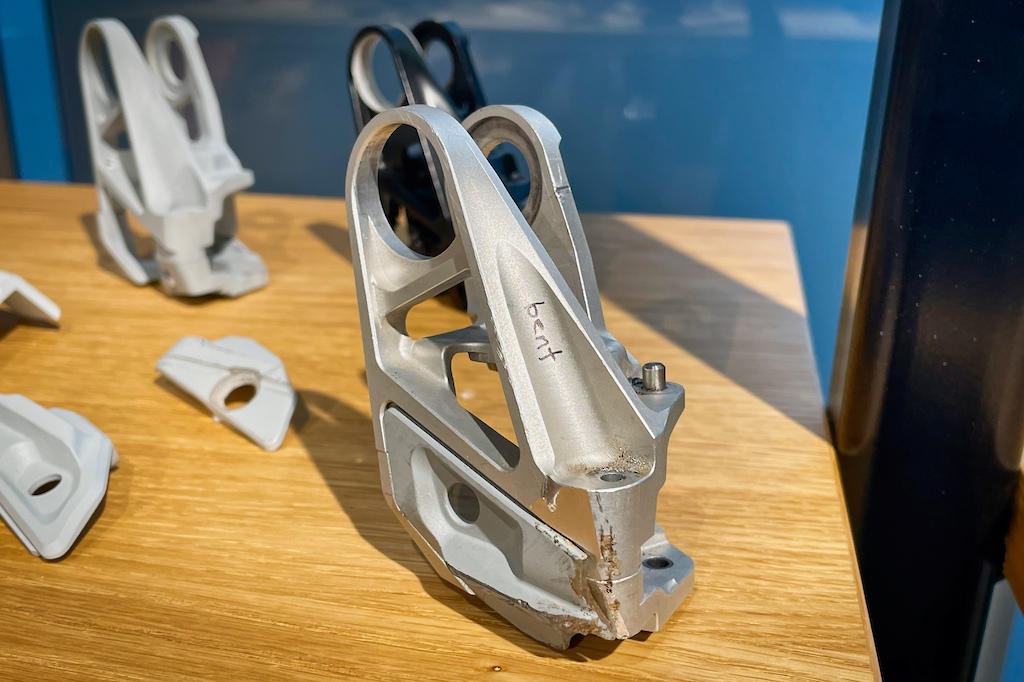
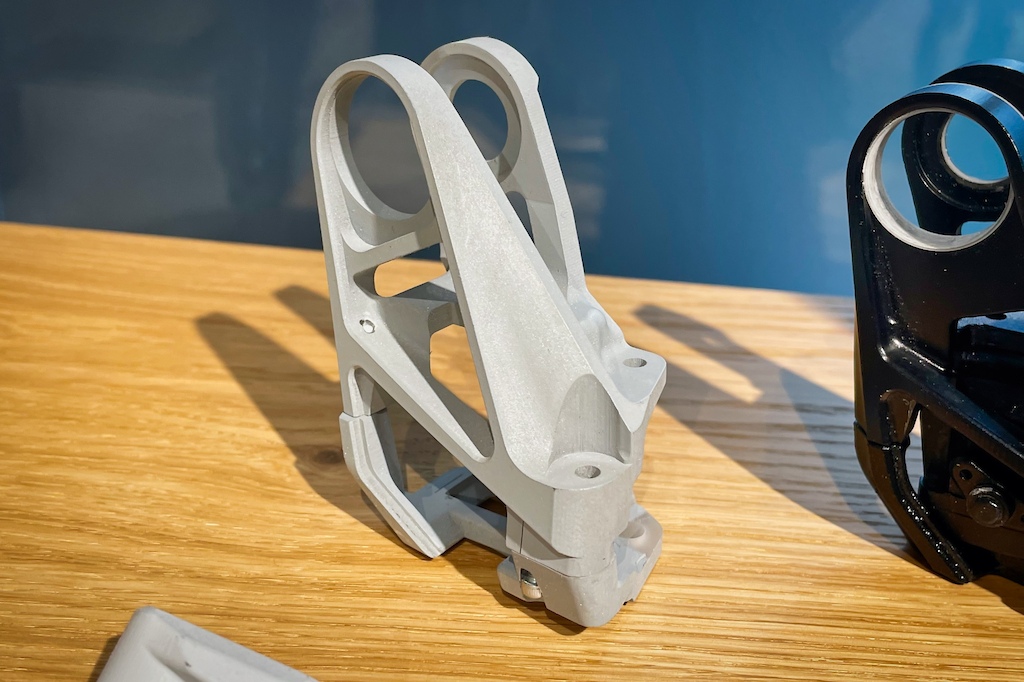
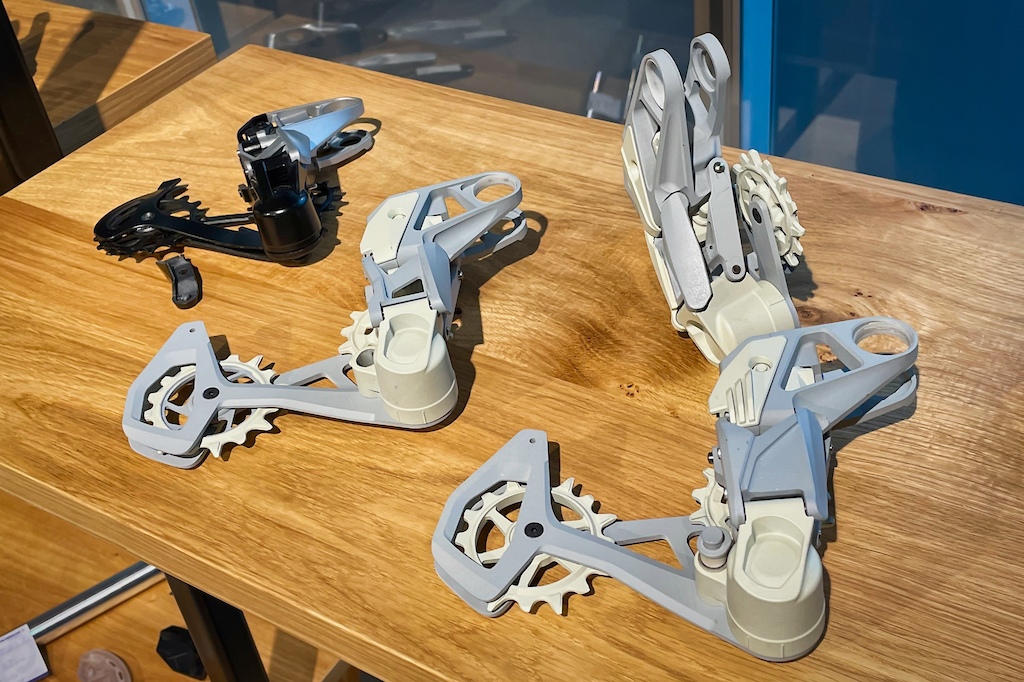
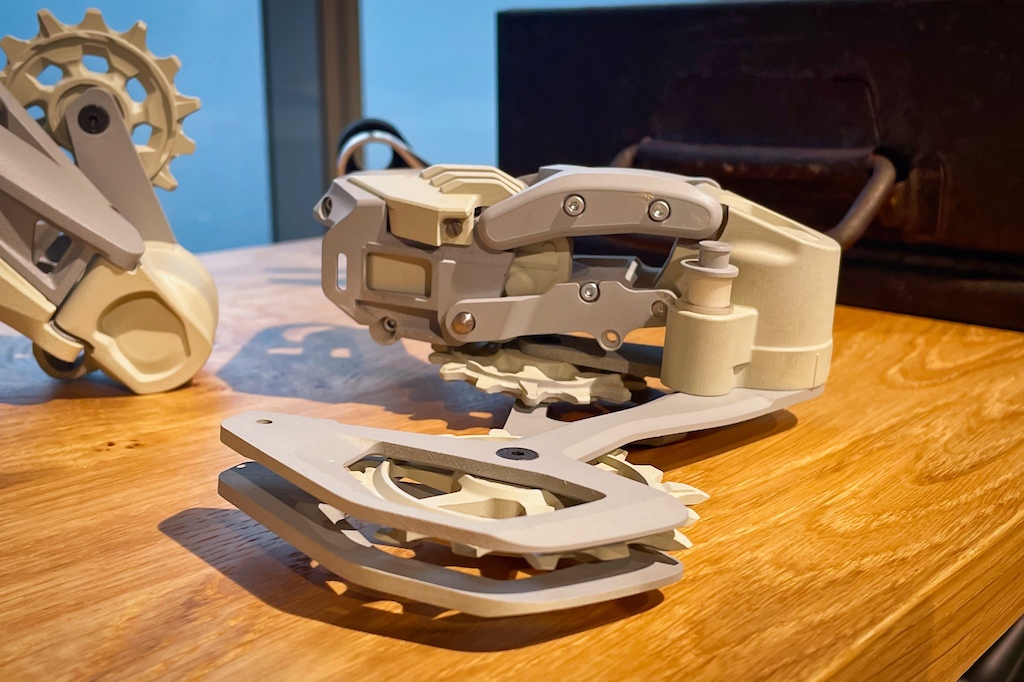
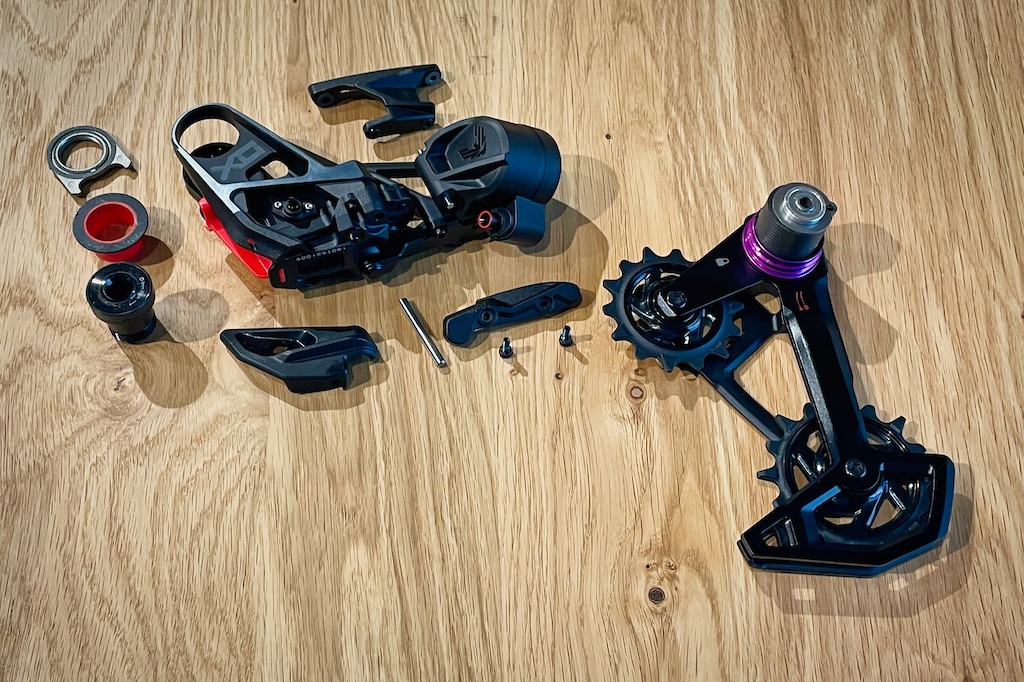

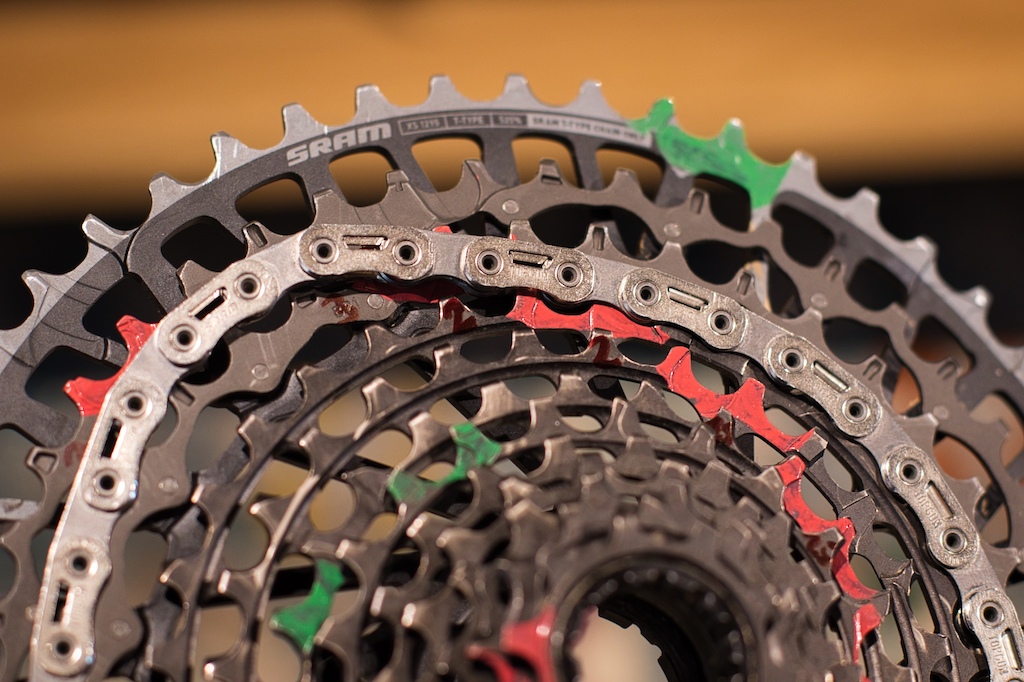
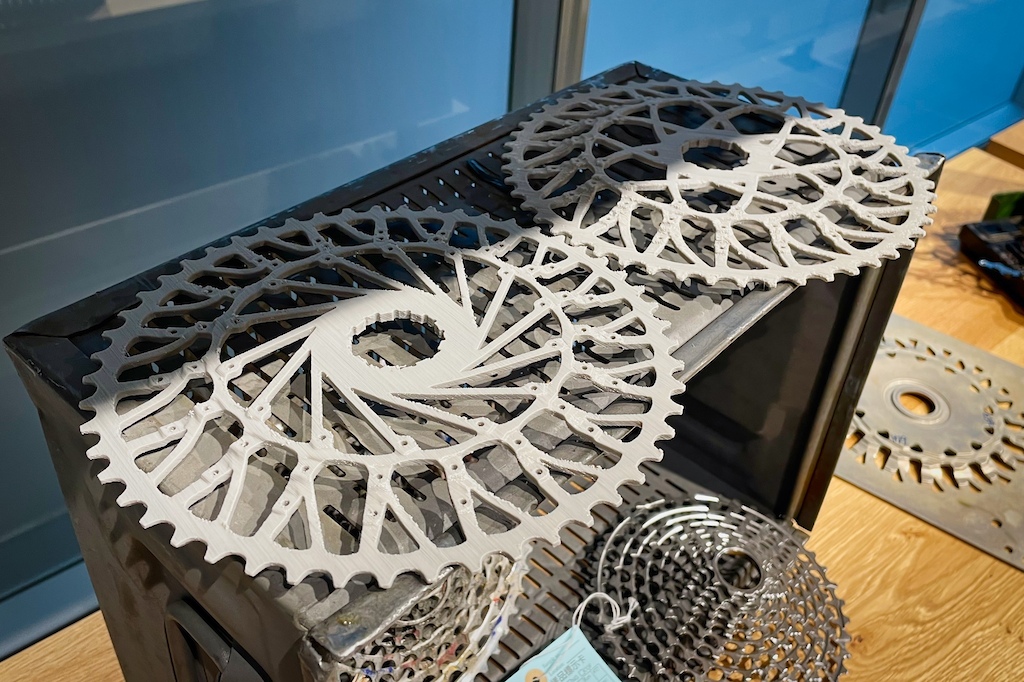

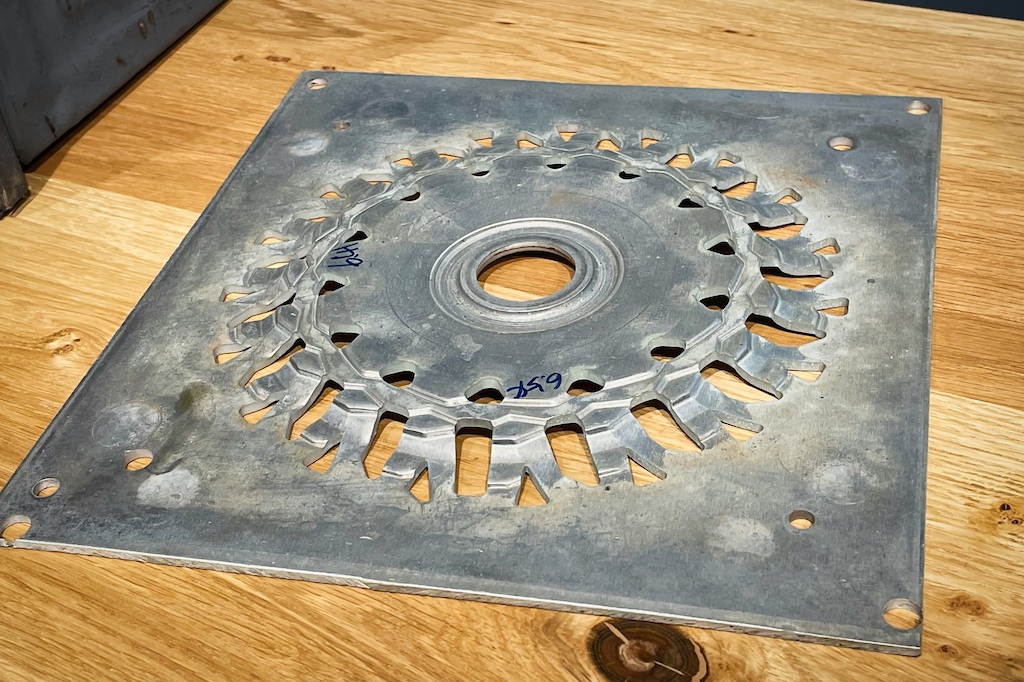
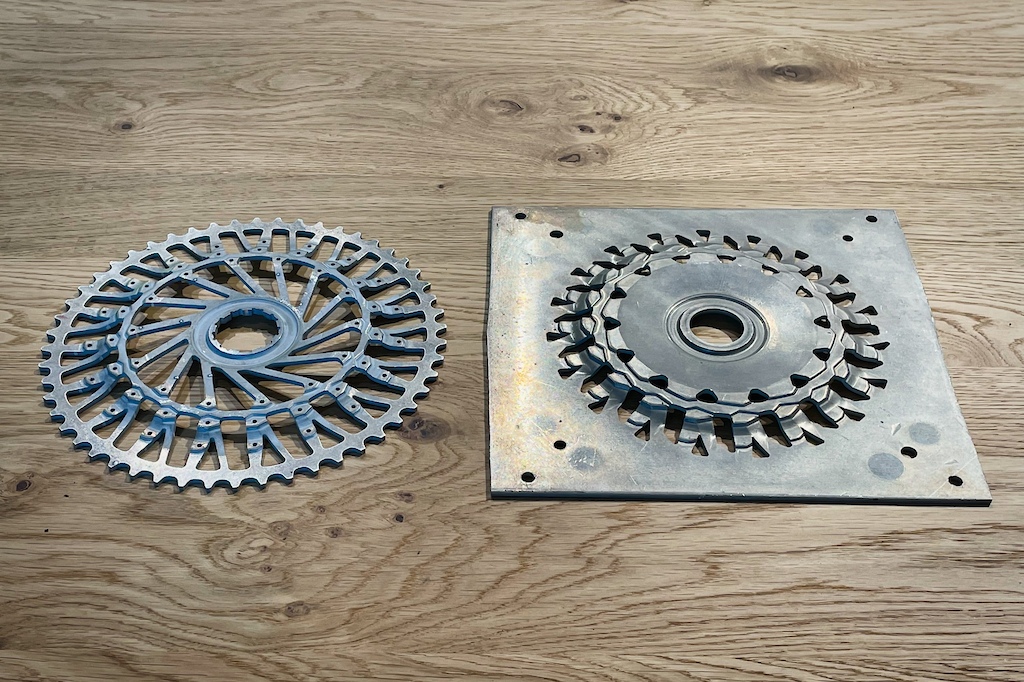

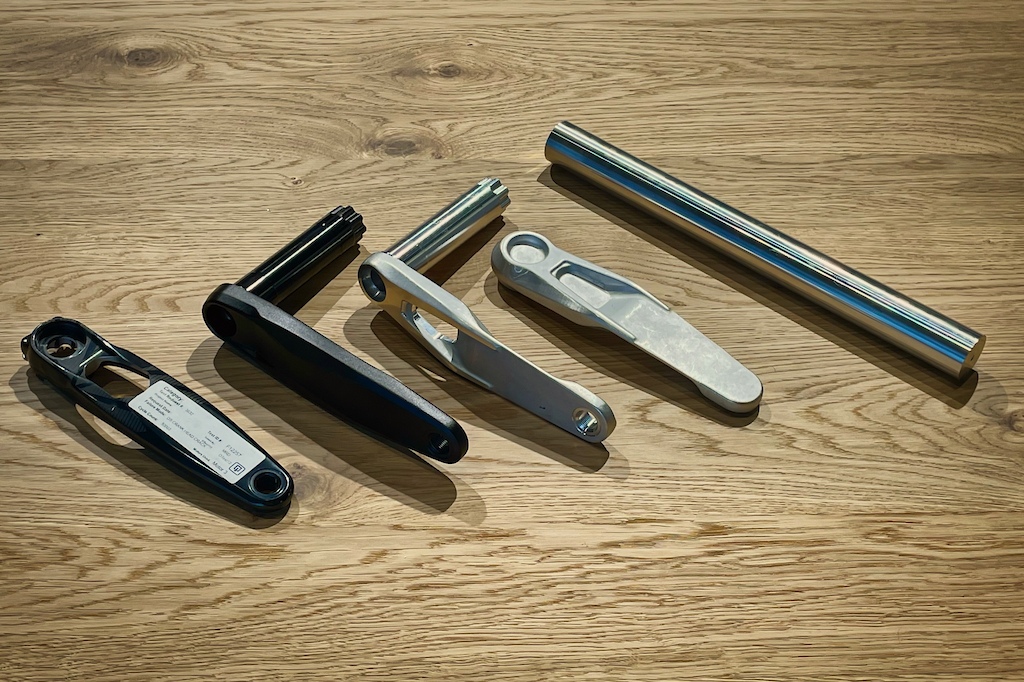

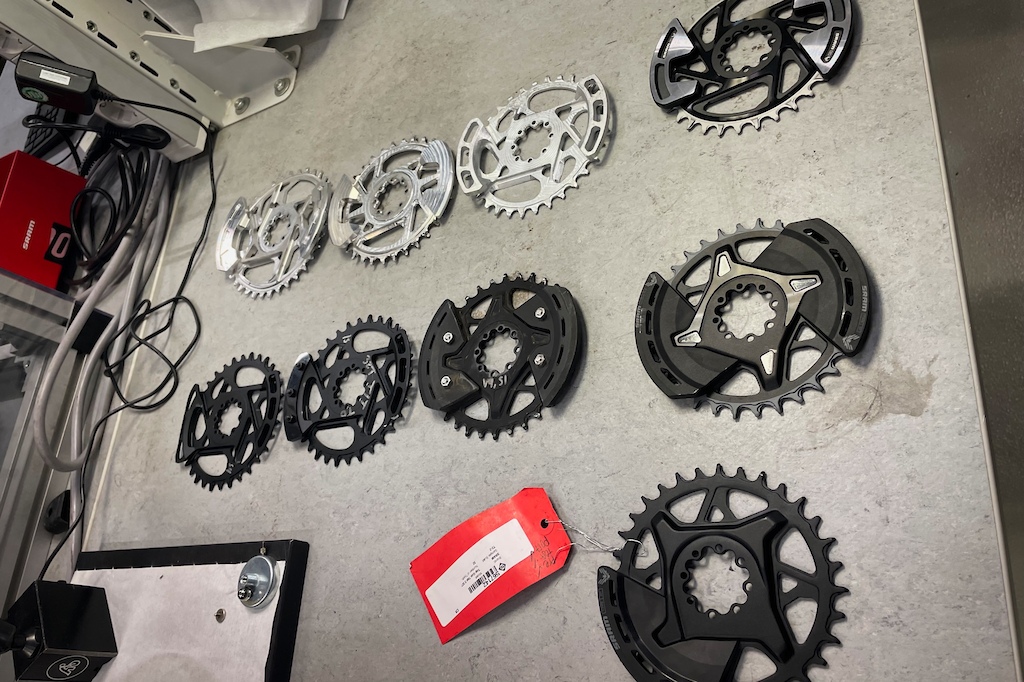
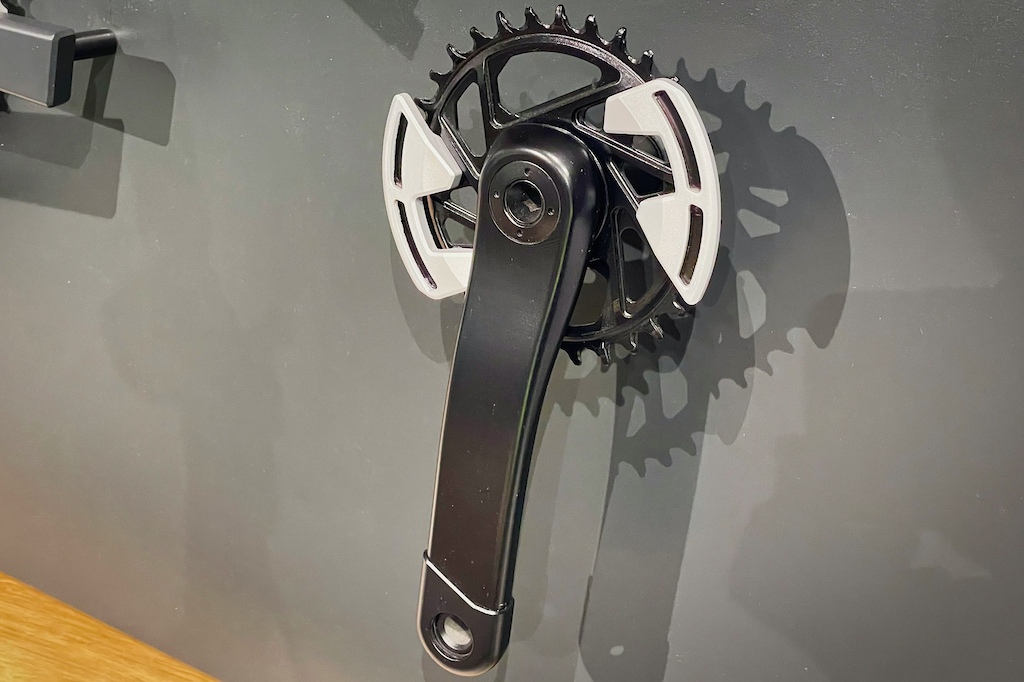

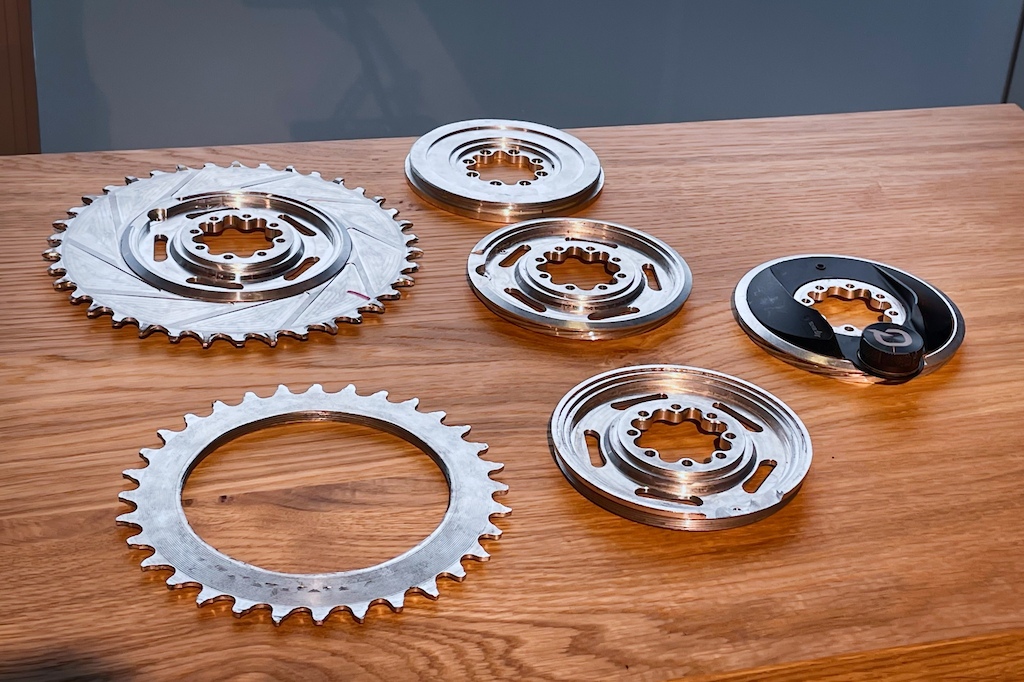

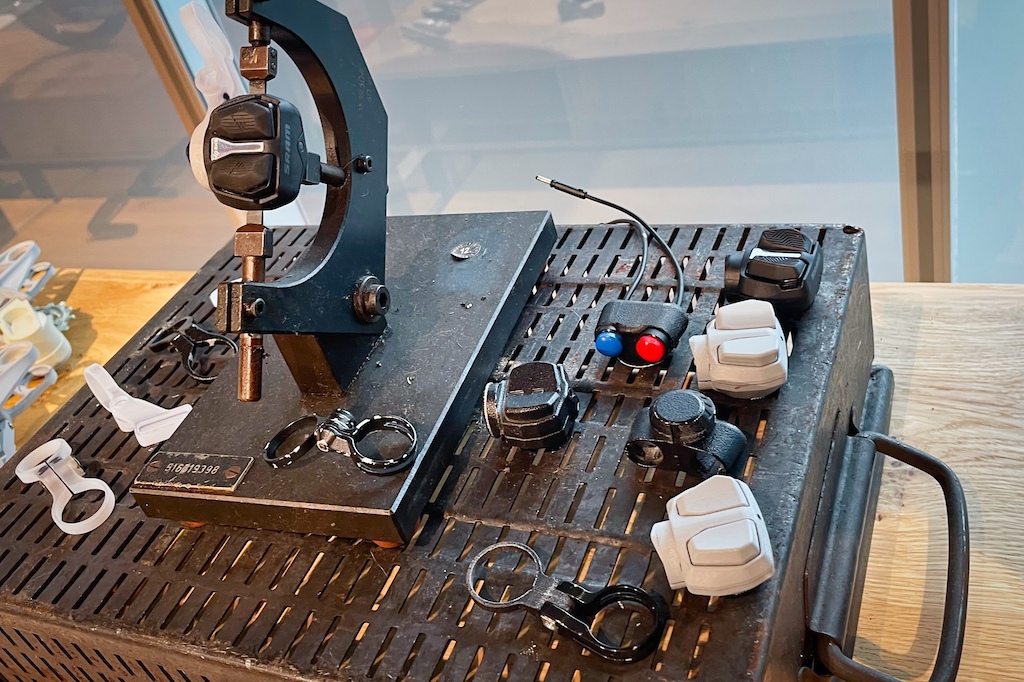

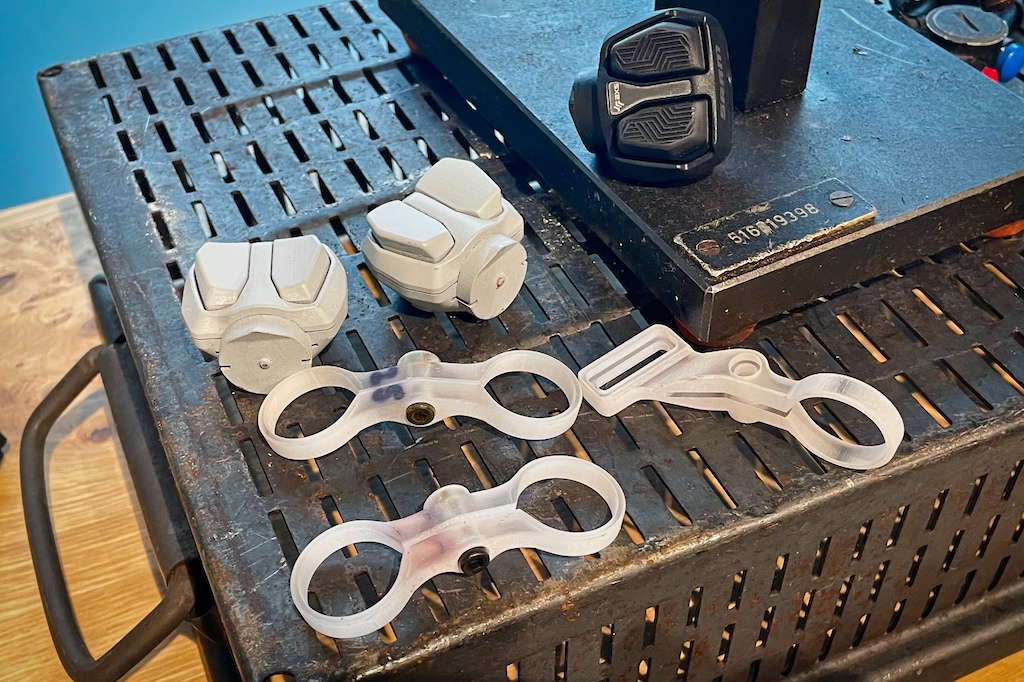

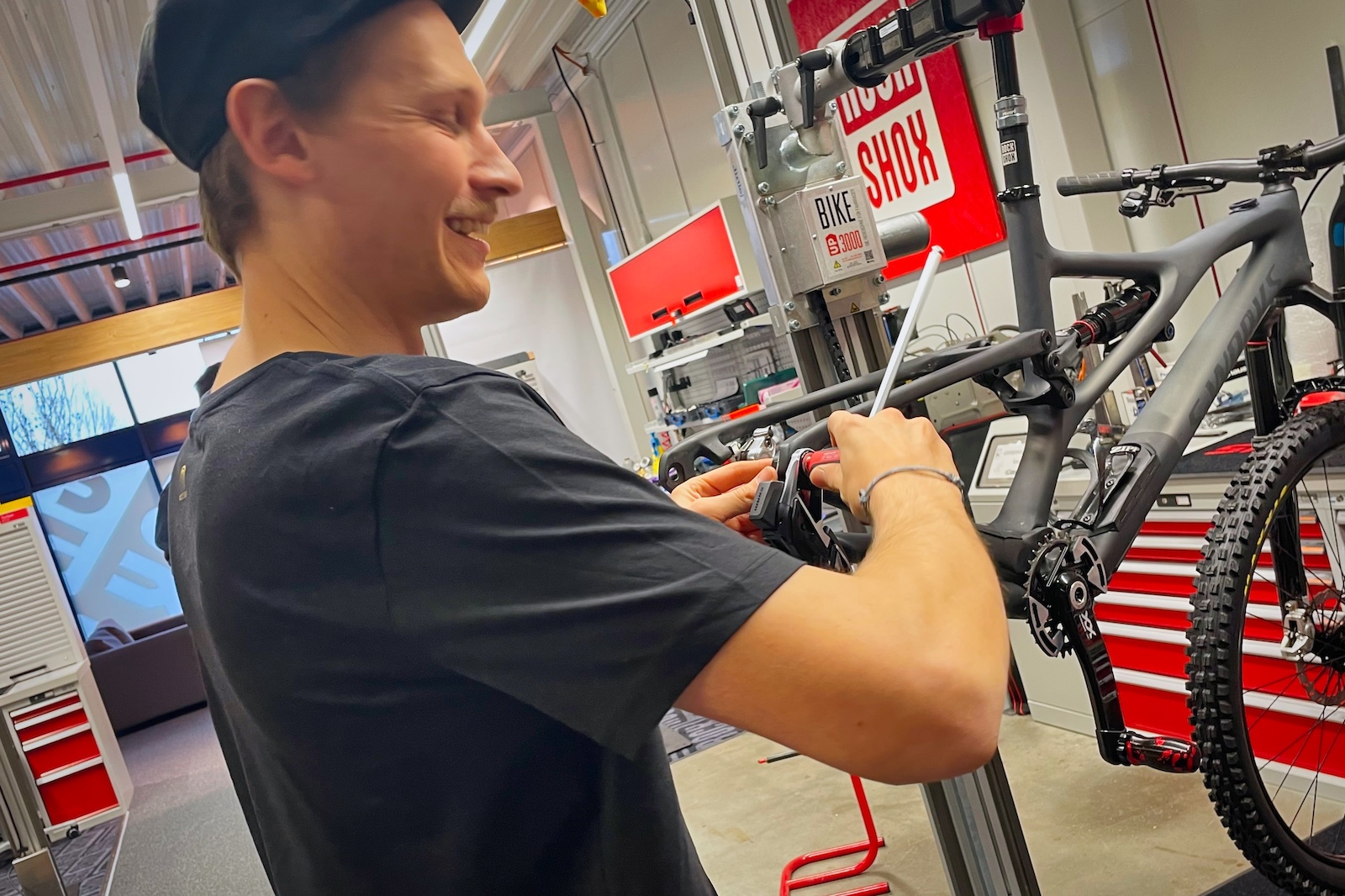

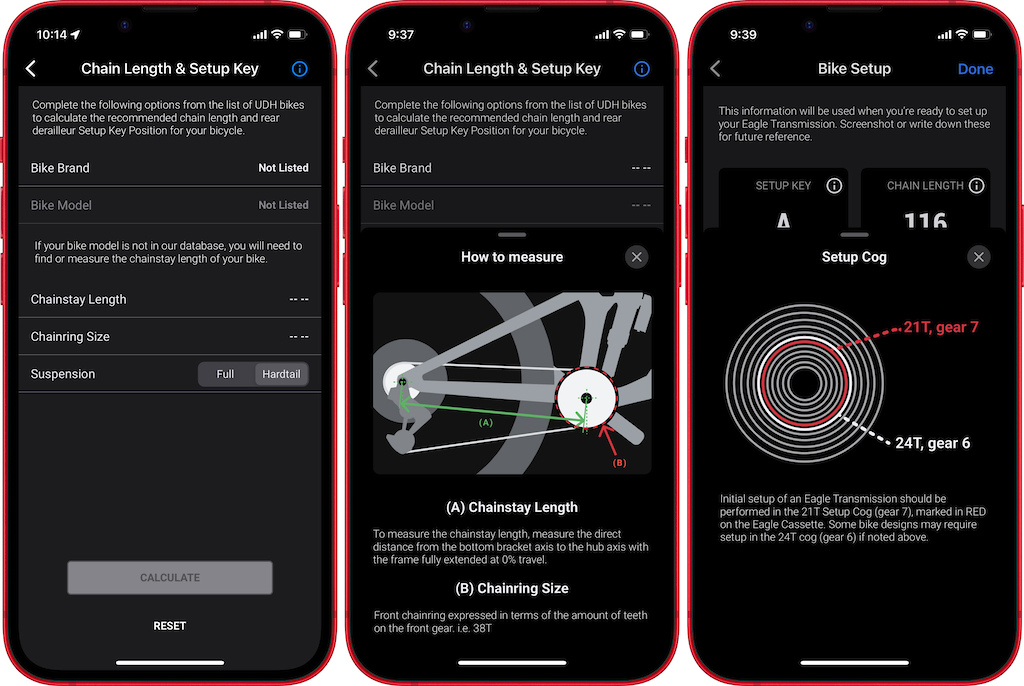
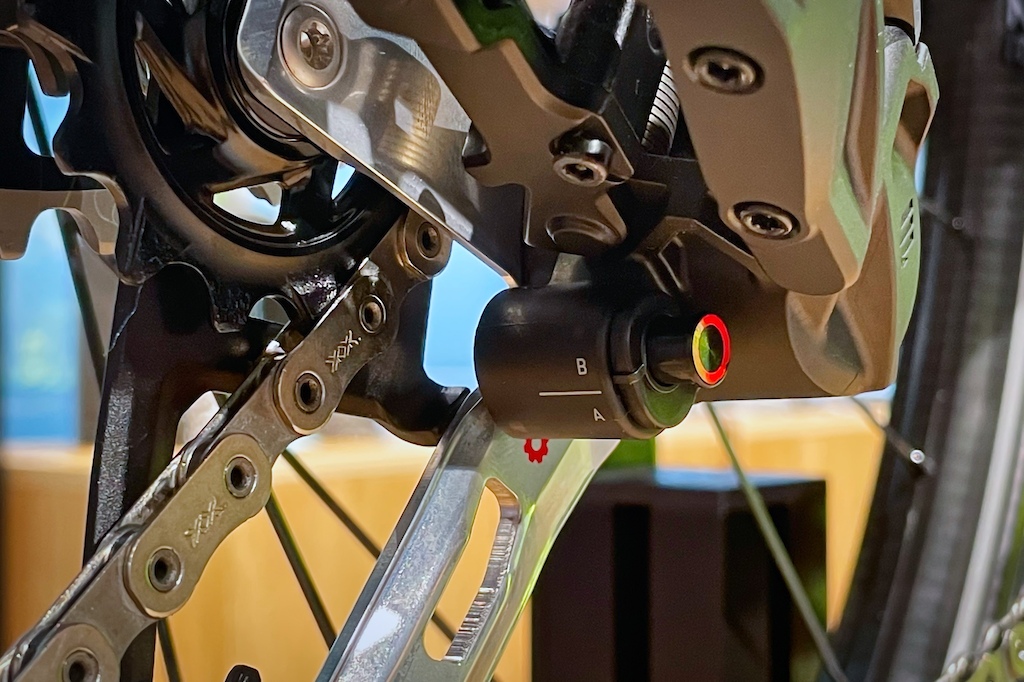
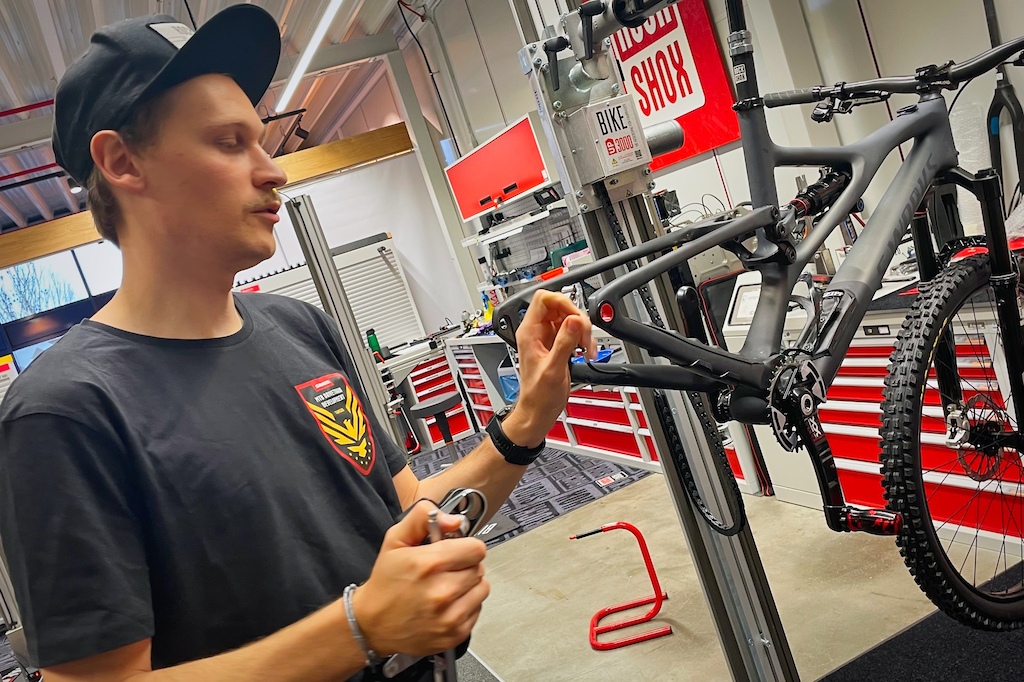
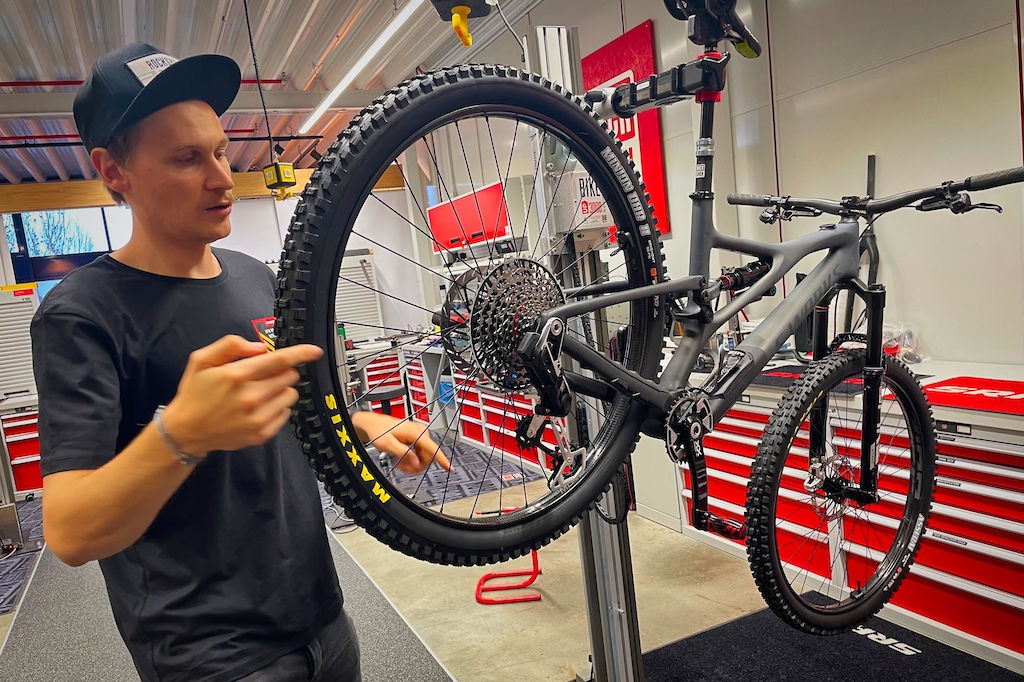
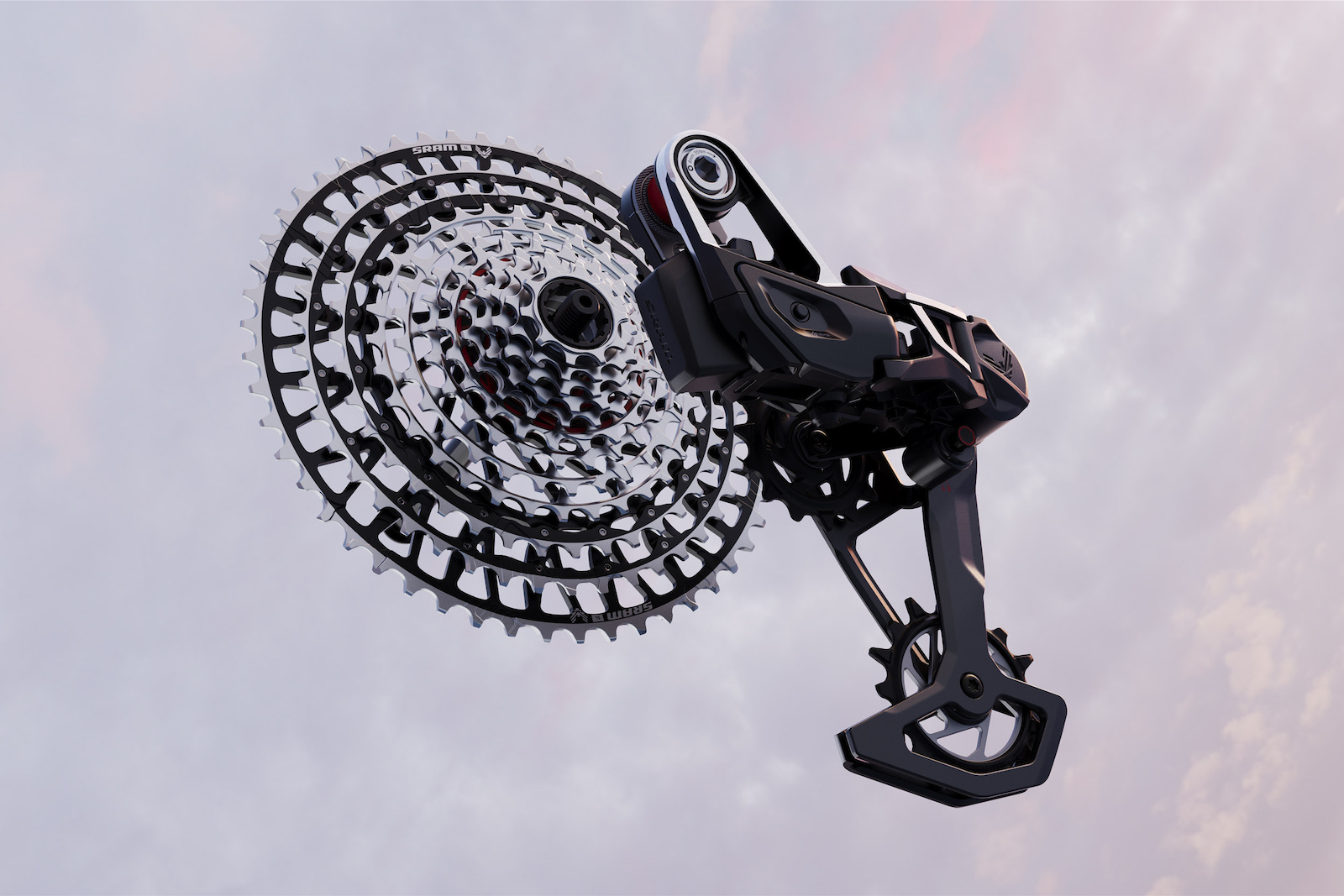

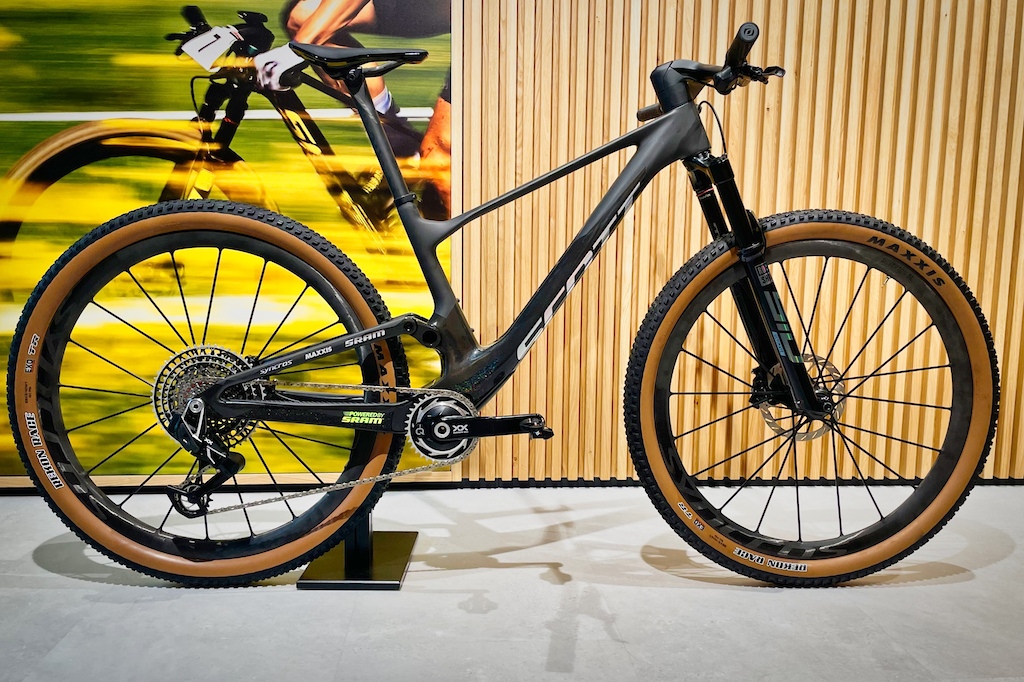
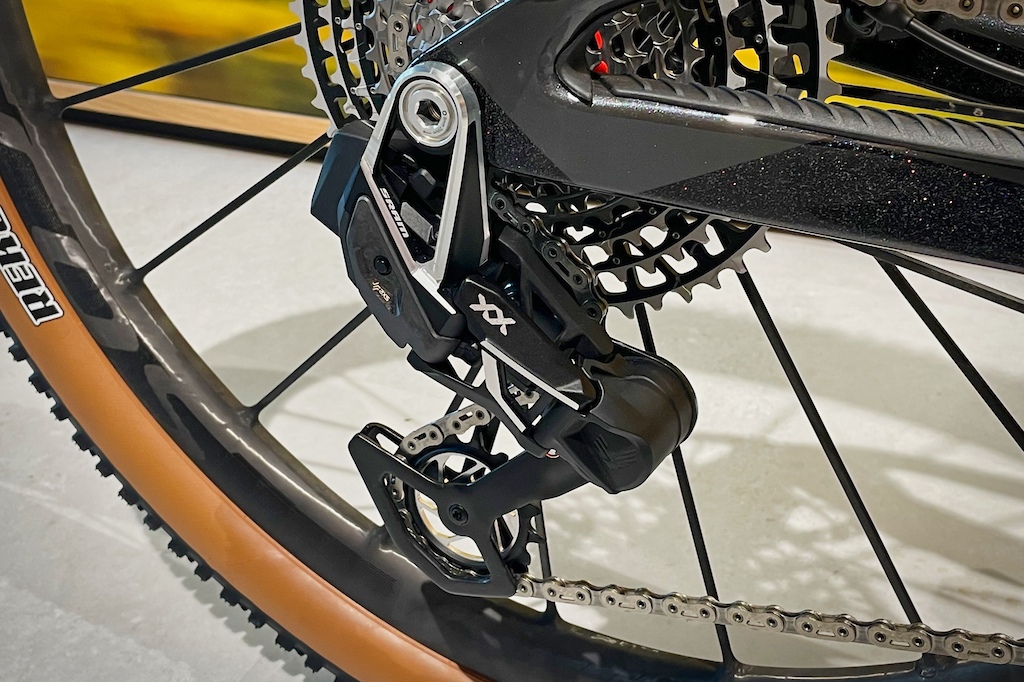

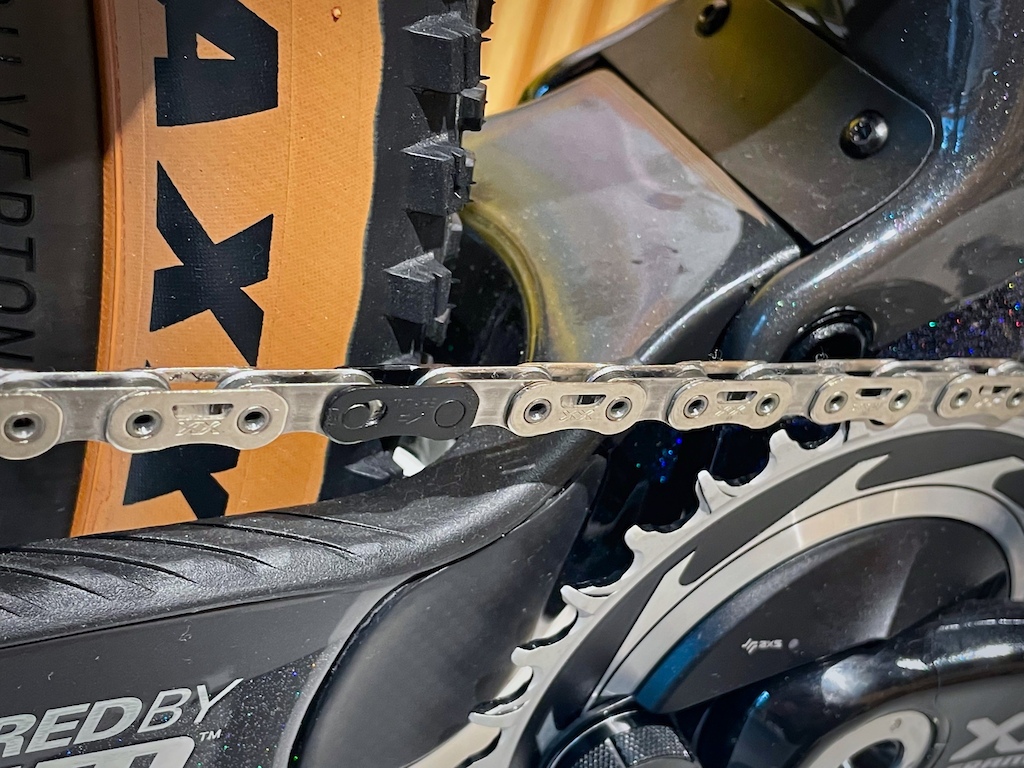

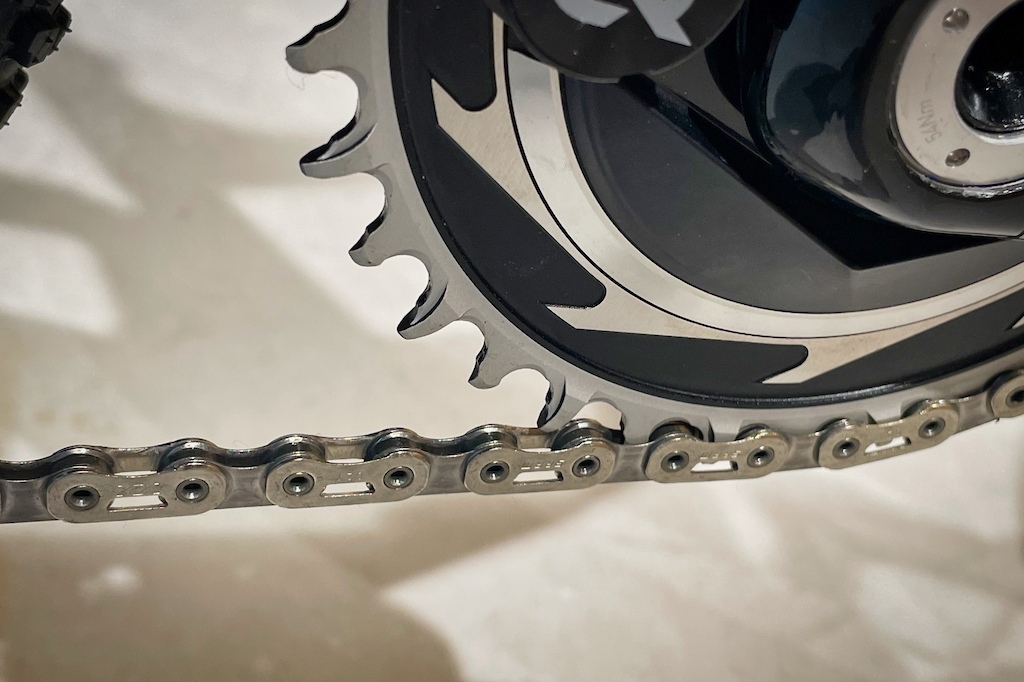

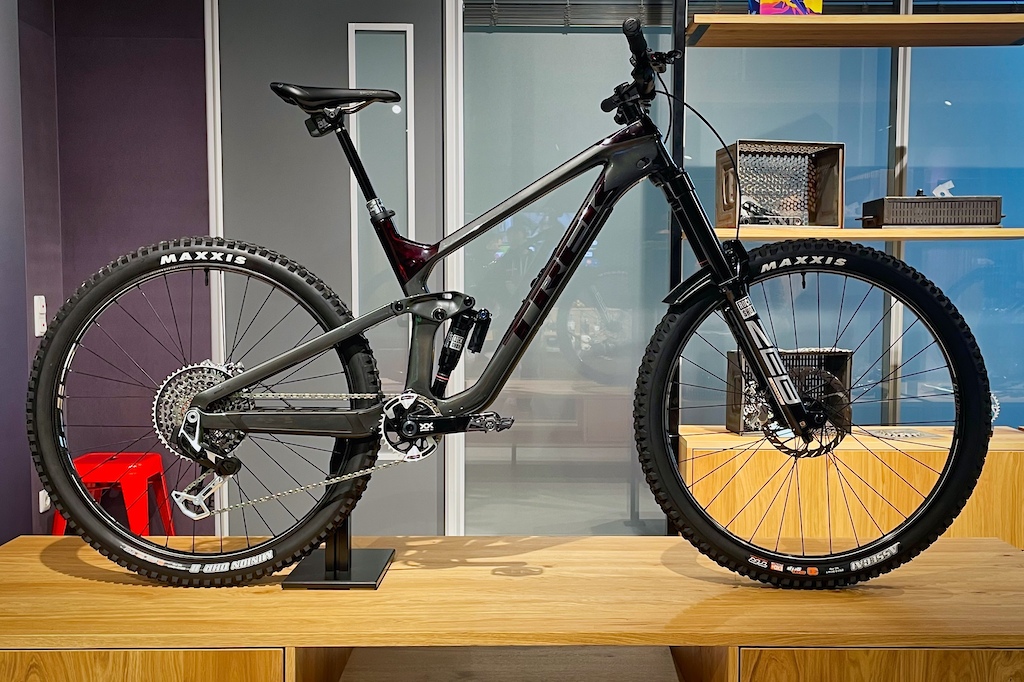
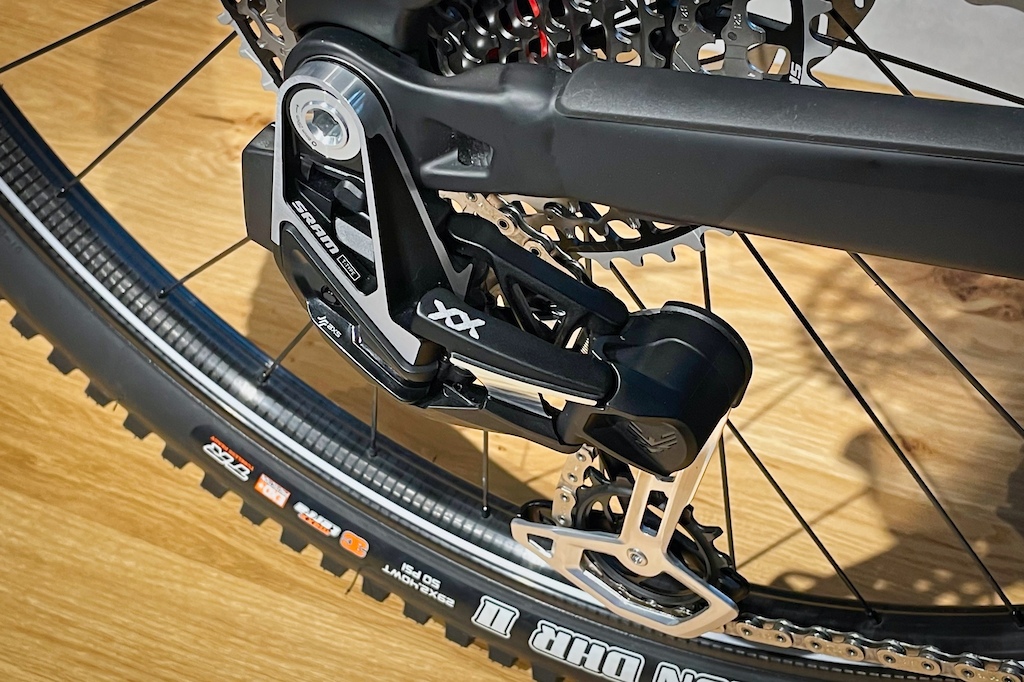
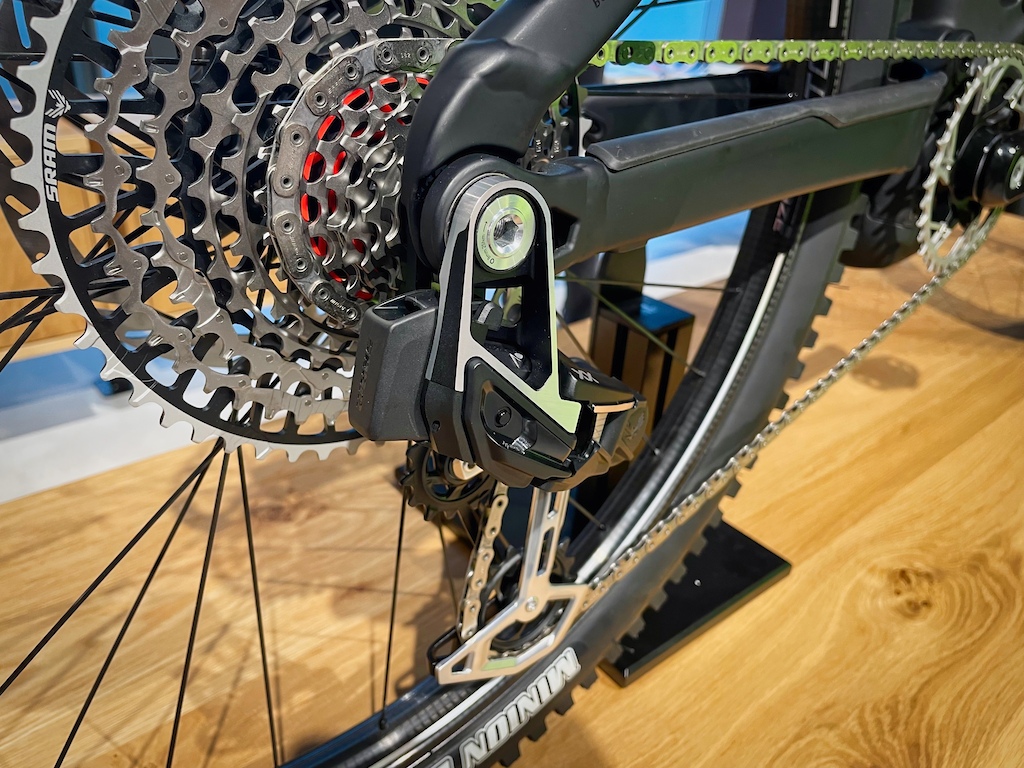
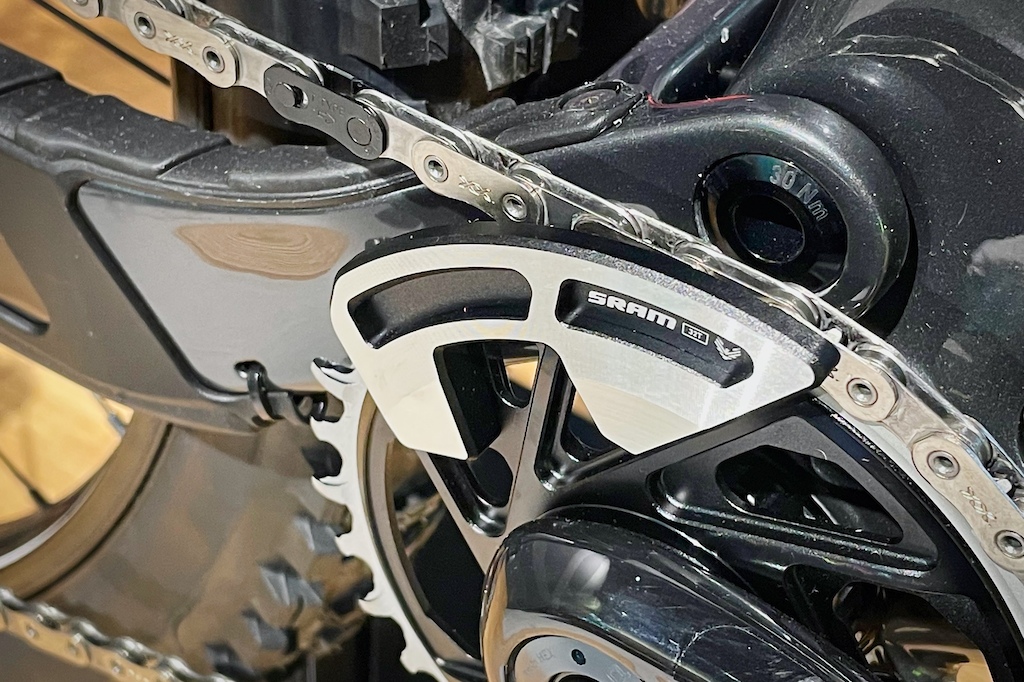


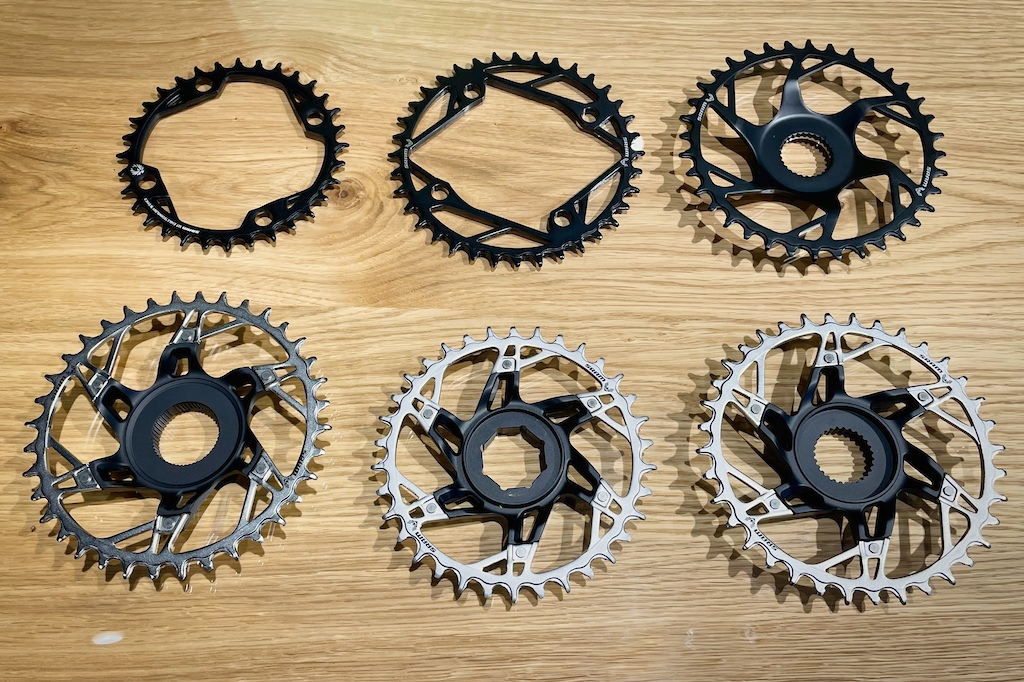


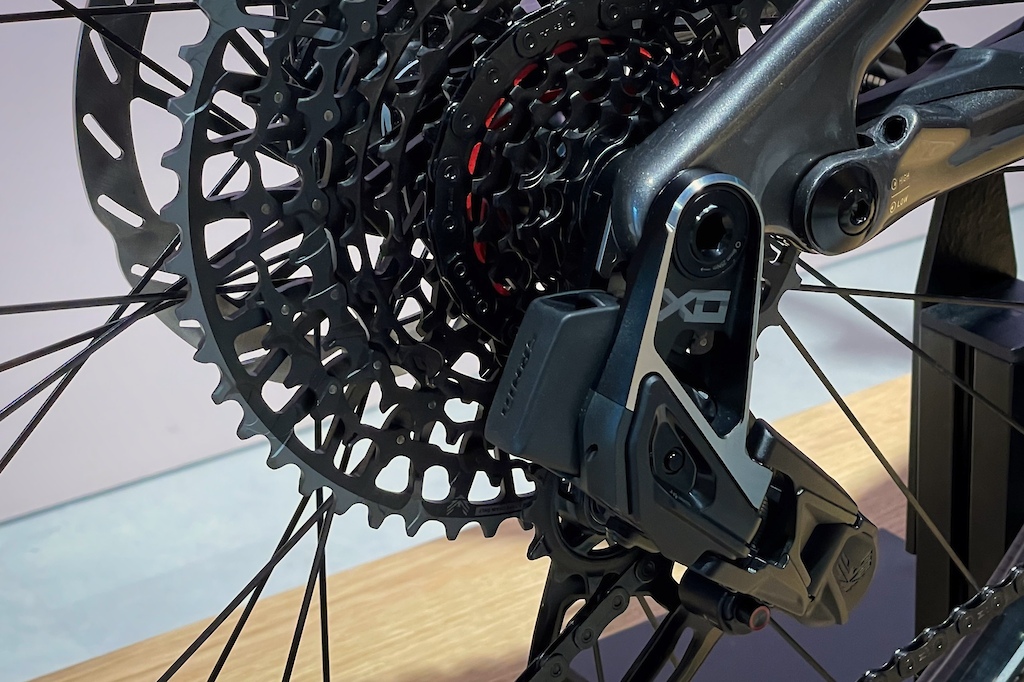
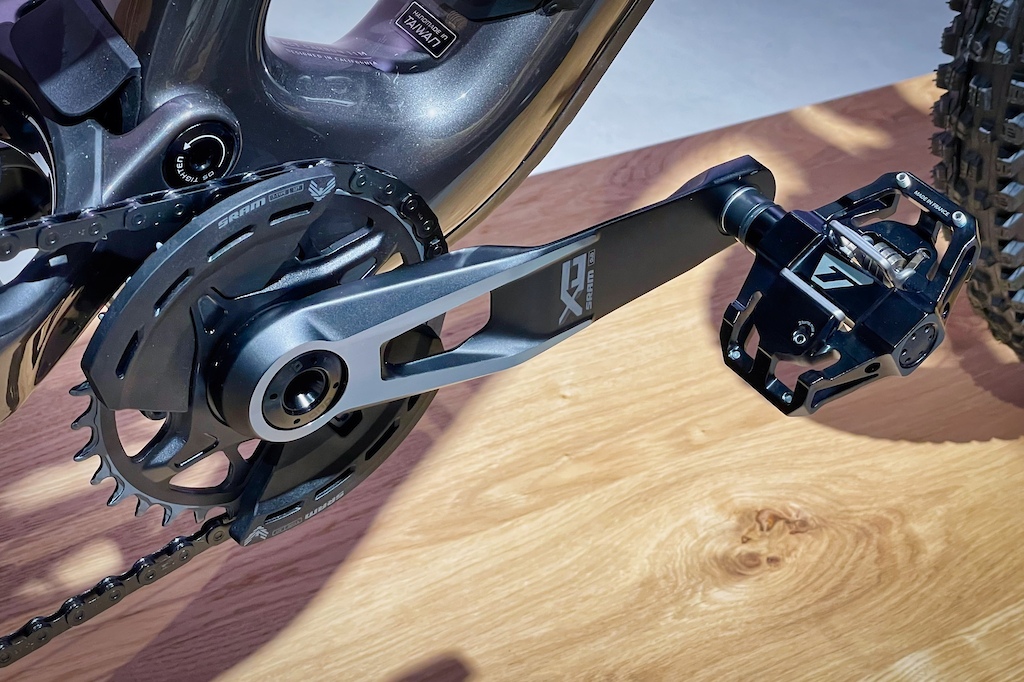
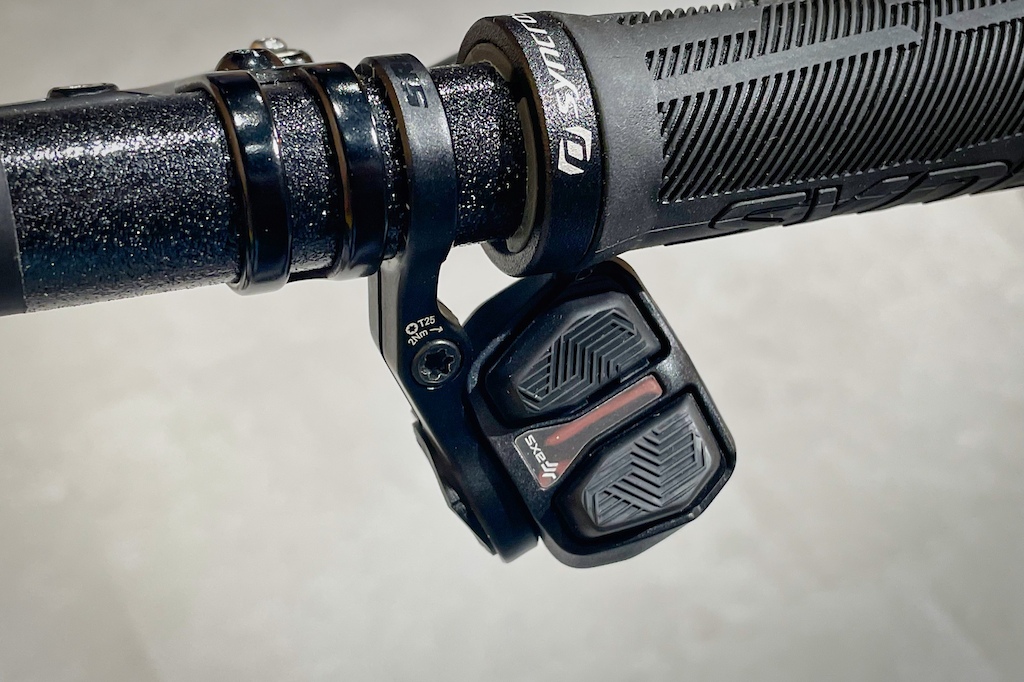
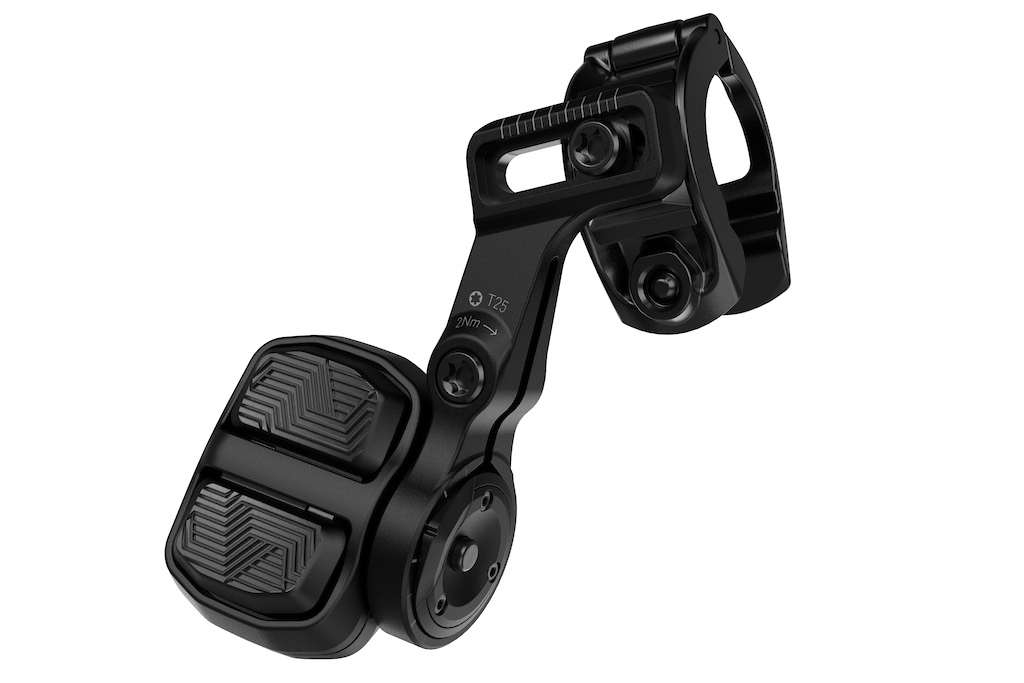
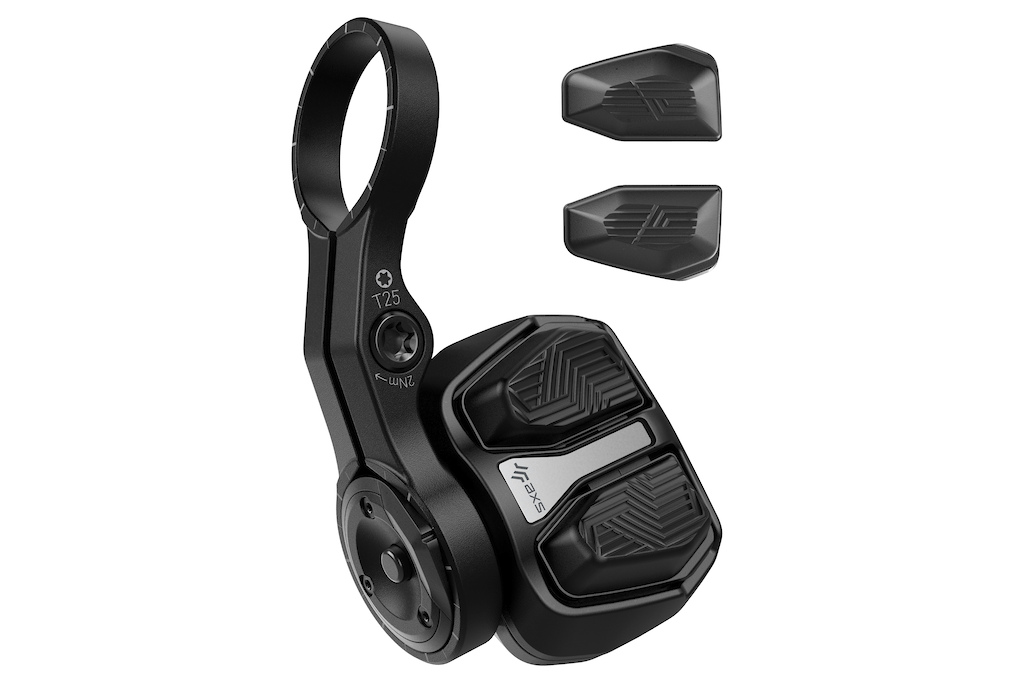



Oh Great Eagle who art in Taiwan, deliver us “the dream" of wireless, direct mount transmissions, and electronically controlled suspension. Free us from the confines of cables, adjusters, and knobs. Until the day all brakes are wireless, forgive us those holes in frames - stealthy through the headset cables shall go.
In the name of SRAM, The Eagle, and the Fifty Two.
Ironic that when I finally hit the age when I can afford XTR, I really don't need it.
we sometimes forget that in this era of highly specialized, nad incredibly good high end components, the mid to lower tier stuff is so damn good, so damn good.
I havent felt the need to get anything above GX Sram stuff in ages, same with Shimano, Deore/SLX works flawlessly for 99% of the time (splurging on a XT shift pod just makes sense).
Appreciate your more measured reaction.
XX and XTR are the reasons GX and SLX are as good as they are.
So when we buy that high end part, we're actually supporting the lower levels.
You're welcome
Thanks
I'm probably commenting in the wrong place as this isn't a personal finance blog. I've just got buddies with sprinter vans and XX1 drivetrains who just feel like they can't get ahead and are financially treading water for years on end in stressful jobs. I've also also got multi-millionaire buddies who are fully financially independent and are on aluminum frames with SLX drivetrains. Spending wisely creates flexibility.
No drivetrain is gonna bankrupt someone, but the purchasing philosophy that goes into buying XX1 AXS for your enduro bike is usually applied across the purchasing spectrum for a person, and it results in people with really nice stuff who feel like they can't get ahead financially and are stuck.
I guess I'm just saying that none of this drivetrain makes sense for the average person. I'm sure it'll trickle down. But in a more pointedly SRAM-specific critique, they don't seem to let their stuff trickle down as much as Shimano. NX/SX is trash compared to Deore.
No. You're supporting the tiered pricing structure that the MTB industry is built on. Brands are merely upselling you with premium (high margin) parts.
Appreciate your insightful comment, jeez, who knew?
There is a difference between a Chevy and a Porsche, a mansion and a mobile home, fillet mignon and a Big Mac, an Ibis and a Huffy, and yes, XTR and Deore.
Those differences extend beyond just the $ they cost.
While I was being sarcastic, there was some truth behind it. Shimano and Sram both introduce new tech with their high end lines (for example, the story we're commenting on). That tech then finds its way down to the lower tiers, improving those levels. The reason Deore is so good is due to the money put into designing XTR.
There are quality differences between Deore, SLX, XT, and XTR. Whether that difference is worth paying is purely your choice.
Your comment is like saying people who buy Porsches are stupid when a Chevy will do the same thing.
people who buy Porsches dont have taste, or imagination thats for sure.
Even to this Ram Power Wagon guy.
A Chevy pickup can do things a Porsche 911 can't. Context matters. It's not a binary Porsche > Chevy. Sometimes I want a burger instead of a steak. No everyone wants a mansion (believe it or not), and there are some pretty cool prefab trailer homes out there.
Your examples are not tiered pricing structures. They are different products with different use cases. Deore through XTR is a tiered product lineup.
It's frustrating that the bike industry plays this tiered pricing game so heavily and we all go along with it. Take the the stumpjumper evo. Pricing goes from the comp at 5k to sworks at 11k with a ton of tiers in between. Do you think the materials or design differences necessitate this huge of a price variation?
I would argue no but brands built shitty entry level bikes so they can offer decent bikes at a higher price. Look at the price of a dirtbike! A yz250f is "only" $8,500 USD, and Yamaha doesn't offer tiers (to my knowledge). There isn't the insane need to upgrade every component on your dirtbike because it just isn't necessary.
Theres nothing interesting about them in any way for me.
It like a fast Camry, who the hell wants a fast Camry?
Also, yes, lower tier items benefit from the technology developed for the top end. Not sure how you can argue something that is so obvious. Every drivetrain advancement that has happened started with the highest level and trickled down to the lower price models. So yes, the highest end model supports the lower level models.
Lastly, you seem to have a huge issue with tiered product lines. Why? What could possibly be wrong with choices. Tiered product lines give us all the options of buying whatever level we choose to. Sorry, I don't see the downside. No one is forcing you into any catagory.
Your example of the Stumpjumper Evo is a perfect example of the beauty of tiered product lines. You can now get into this bike at whatever price point you want and they're all good options. Why do you find that "frustrating"? I find it awesome.
I loved the old 911 Turbos, they were my lust-after car of choice. The new ones, IMO, are a sleeker version of the same.
Your vehicle example is not a tiered pricing structure. No one is cross shopping a Malibu and a Corvette. One is a sports car and the other is a family sedan. Not all cars serve the same use case. Are you going to take your Ram Power Wagon to the race track?
"Those price points usually correspond to the level of quality inherent in each option"
Price and quality is not a linear relationship. It's a nice idea but that's it. It's what every marketing department wants you believe.
"Also, yes, lower tier items benefit from the technology developed for the top end. Not sure how you can argue something that is so obvious. Every drivetrain advancement that has happened started with the highest level and trickled down to the lower price models. So yes, the highest end model supports the lower level models."
You are making the assumption that because something is done this way, it is in the customer's best interests. Companies want to maximize their profit. This trickle down tech strategy is employed across many industries.
The reason new tech trickles down is because companies can charge more for new tech/features so they always launch it with the premium tier. They can capture the max profit of the product's initial entry into the market. They then offer this tech to lower and lower tiers over time (to capture more profit at these decreasing price points). During this process new features are introduced to the top tier and cycle repeats.
Why isn't the entire SRAM Eagle lineup getting this new hanger setup? Because SRAM can make more money by keeping it a premium feature offered only on their top tier. Over time, the GX, SX and NX will receive this update in descending order of their tier.
"you seem to have a huge issue with tiered product lines. Why? What could possibly be wrong with choices. Tiered product lines give us all the options of buying whatever level we choose to. Sorry, I don't see the downside. No one is forcing you into any catagory."
The downside of this kind of tiered pricing is that you (the customer) pay more for goods and services. Companies make a cheaper entry point products so they can sell better goods/services/features at a higher price.
This pricing tactic is everywhere. The MTB industry is not alone in this.
"Your example of the Stumpjumper Evo is a perfect example of the beauty of tiered product lines. You can now get into this bike at whatever price point you want and they're all good options. Why do you find that "frustrating"? I find it awesome."
Imagine if you were Specialized and you could only sell one spec of Stumpjumper, what would it be? How aggressively would you price it?
The answer is pretty easy: without tiers, the Stumpjumper would have a better parts spec at a lower price compared to today's pricing. Tiers allow brands to raise prices. Marketing 101.
PS 964 or bust if we're talking 911s.
There are so many holes in your logic that I don't have the time or interest in going through them all.
It's not a pricing tactic, it's basic economics. New technology gets developed and eventually trickles down, creating better lower level products. This does not force people to buy the higher price version. It allows them to buy the lower priced option.
Trickle down is good for everyone. Whenever Sram comes up with a new, better XX level design, you DON'T have to buy it. Keep what you have and rejoice in the fact that in two years, GX will be even better. You get the top level technology at a lower level cost.
This is a good thing.
How that concept eludes you is, frankly, beyond my comprehension.
As for your Stumpjumper example. Your understanding of that is so off that I don't even know where to start.
Apparently, in your mind, we would somehow be better off if we had one choice on component level. You somehow think having options benefits the company rather than us.
That is beyond absurd.
"Bud, I'm sorry but you really don't get it. You sound intelligent but your words are just so wrong.
There are so many holes in your logic that I don't have the time or interest in going through them all."
ok..... strong argument!
"It's not a pricing tactic, it's basic economics. New technology gets developed and eventually trickles down, creating better lower level products. This does not force people to buy the higher price version. It allows them to buy the lower priced option."
Economics is about maximizing profit. Why doesn't SRAM update the entire Eagle lineup with these new hangers? Why is it only the top tier?
Let's talk in terms of economics. A tiered trickle down pricing structure allows you to capture more profit by targeting groups of buyers individually.
XX buyers represents the most inelastic demand: those that are brand conscious or have money to burn. They are going to buy at any cost. Why would you offer them lower tiered options? You are leaving money on the table.
GX buyers represent less elastic demand. Where their demand curve meets the supply curve is lower. They aren't willing or able to spend as much. NX/SX buyers are the same but even lower. If you were to offer all of the Eagle lineup with this new tech at the same time, many of the buyers may go for cheaper options. Again you're leaving profit on the table.
"Trickle down is good for everyone. Whenever Sram comes up with a new, better XX level design, you DON'T have to buy it. Keep what you have and rejoice in the fact that in two years, GX will be even better. You get the top level technology at a lower level cost."
You are right. You don't have to buy anything but if you want to mountain bike, the tired pricing structure sucks. Look at all the grades of suspension, brakes, drivetrain, even frame carbon (thanks Yeti). It's pretty absurd.
Again, look at the dirt bike's non tiered business model to see how much further your dollar could go.
"This is a good thing....How that concept eludes you is, frankly, beyond my comprehension."
The thing you don't understand is that the tiered pricing structure is artificial. SRAM could just sell strictly XX level tech (no X0, GX etc) at a lower price point (and higher volume) but they make MORE money with the tiered system in place.
"As for your Stumpjumper example. Your understanding of that is so off that I don't even know where to start."
Try me.
"Apparently, in your mind, we would somehow be better off if we had one choice on component level. You somehow think having options benefits the company rather than us.
That is beyond absurd."
Again, these tiered levels are artificial. Bottom tier goods create an artificial floor. We would be better off if brands only made good quality gear as they wouldn't be able push prices for higher tiered goods.
The examples of Tesla is also about brand positioning. It's much easier to start with an expensive product and move down market than go the up market. VW tried to go up market with the Phaeton in the 2000's, and it failed spectacularly.
I still think MTB tiered pricing is terrible and we (customers) pay more as a result.
I'm not sure why you believe its terrible for customers, ultimately the customer has the "choice" to purchase what they want.
A tiered pricing structure, as I understand it, is more for gross sales. So once you've purchased a certain number of "a thing" you can get a better discount (volume sales)
"good, better, best" (LX, XT, XTR-XO, X1, XX1) highlights a brands differences between models, makes it real clear what youre additional money is going to, and if that adds value to you.
I see no value in most components over GX, except maybe the XO cassette and chain, as they last longer (but are more expensive to replace)
so that "good, better, best " model allows me to choose what I want. (Iw ould like the adjustable lever position on the XX shifter pod, but I cant justify the additional price)
By SRAM releasing their top level components, they are trying to sell low volume, high margin examples to recoup developement cost quickly (whether that strategy works, is another debate) They will be followed byt the lower level components, prolly in a year or so.
Why do think this is bad for us, the end consumer?
the early adopters that are frothing at the mouth for the latest and greatest, can have what they want. They also get to feel special, cause they have something others dont. That helps to offset the cost and risk on the development of the both the top level stuff, and the mid-lower end stuff.
Maybe "good, better, best" or "premium" is more appropriate than "tiered". I just used the first word that came to mind.
My issue with this pricing structure is as follows:
We pay more because the "good" sets an artificial floor on pricing which allows for the "best" to be priced higher than it would if there was no "good" or "better" options.
Imagine XO at GX or lower pricing. Instead of the stumpjumper tiers costing between 5k or 11k. It was 7.5k with all top spec stuff. The lower tiers are used to justify the higher tiers pricing. (price anchoring)
What do you think the R&D + manufacturing + inventory + distribution costs are for multiple tiers of a product compared with just one?
It's obviously way more expensive but this allows companies to capture different customers at different price points. They can capture those buyers who are willing to spend significantly more for a marginal improvement.
This is common business strategy + marketing at the end of the day. Doesn't mean I'm a fan.
We as consumers get top make the choice, mtb drivetrains are so good nowadays, and so much better than they were during 9spd days.
the "good, better, best" isnt the driver behind the prices, our desire to own more than what we need is.
your idea of XO at GX pricing doesnt hold any water, as youd just complain about that price anyhow. XO doesnt hold any value for me over GX, no matter the price, so theres no real benefit to me. Thats not to say that there isnt value for someone else.
Having different price levels for products isnt a mtb or cycling phenomenon, and I dont see how it makes things more expensive.
uprated trim levels for cars dont make the entry level of that car more expensive
Looks f'ing awful to boot.
It needs to be sealed for incessant hosing and so the British among us can ride it in their endless slop.
It needs to be durable and last longer than the afternoon at a kids birthday party. It needs to withstand crashing, smashing, bouncing, hanging in the back of a sketchy trailer at a shuttle event near you.
Plus several layers of global shipping, distribution and a retailer.
Pretty good deal all things considered.
Curious if this will trickle into cable form eventually and just be how all SRAM families will be.
There’s a decent podcast from the product lead at SRAM. It’s a little cagey, some decent insight to mountain of tasks to build their electronics, and flight attendant.
To be clear, there is absolutely nothing wrong with making a profit. But, there is something wrong with misleading marketing. This clunky, ugly shifter design comes from electronics engineers (many of whom don’t ride much, if at all) that were tasked with reducing SKUs and lowering costs. Unfortunately that comes at the expense of riders who could have benefited from a better, more expensive ergonomic design similar to SRAM’s mechanical shifters that were already class leading in ergonomics. Since the market effectively sets prices, not sellers, SRAM reaps all the benefits from this design decision (in increased profits) while customers simply get a worse product (the shifter) that they don’t have an alternative to since the system is proprietary.
Hopefully this sticks much harder. Hangers are stupid. 400 ways to mount a derailleur to a bike is a goofy system.
Yes I know there’s still loads of what’ll soon be the “old” eagle but still, exceptional timing on SRAMs part
Would you complain of Ford came up with an insanely better F-150 because it would make the old ones look bad? Of course not.
They have been careful to make the entirety of the new Eagle cross compatible, how can you complain about this?
When should any company come out with completely new, groundbreaking technology? June? September? December? What is your perfect month? Or what level of inventory should they wait for too introduce something like this?
Nice work SRAM, I'm more of a Shimano 'appreciator' and this is insanity on the pricing, but amazing tech. Beautiful design and I like the idea of is meant abs designed to last.
To be absolutely clear: No bike component from a big manufacturer is aimed at riders or bike shop owners and buyers. It is for OE consumption. Period. Aftermarket sales are largely a headache to these companies, as it is massively costly to deal with in terms of sales, distribution, product support, customer service and more. In short, it’s a necessary evil that companies reluctantly have to deal with. Once the sport understands this, maybe we’ll finally get some relief from the frustration of why stuff isn’t made for us.
I have worked in the bike biz for 28 years and seen a lot. I even worked at the big S for 5 years. Aftermarket used to be an afterthought for sure but that changed almost 20 years ago - especially at the high end. Deore is considered high end in the OE world.
Additionally, price point doesn’t have much to do with whether it’s aimed at OE or not outside of the clear examples of low end OE components that can’t be purchased aftermarket.
- Multishift is much much slower now. Basically a half second pause between the multishifts. The current axs was already pretty sloppy in it's multishift performance and speed. They needed to improve both performance and speed in this new group which it doesn't sound like they did.
- Battery Life has been Decreased not increased. Due to the way the mech works it demands a larger power draw. It seems pb readers are endurobro's that typically don't do long 4+hr rides. However, in the realistic world of XCM'ish type stuff (4-6hrs) most of us can drain an axs battery within that time under normal shifting. Yes I understand the specs say their batteries are supposed to last xx hrs and on my gravel bike it does. However, on my mtb this is not that case. 5-6hrs is pretty much the limit I have experienced. Curious of what that real world limit is now.
Looking forward to seeing some of the shifter/pod 3d printed after market solutions come up with. Would be nice to have tidy options and perhaps even index finger options. Glad to see the shifter is at least backwards compatible.
Seems like you’d be better served by a cable my dude.
Do like the improved boost chain line
Did you read (or watch) anything about this new system? It appears to be insanely strong, and unless you usually risk ripping your REAR AXLE OUT!!!?? You'll be fine.
remove the derailleur hanger and if something goes wrong(which happens all the time in our sport) which part now is the sacrificial one? the ultra expensive derailleur or the frame? because 10 times out of 10 I would prefer to replace a derailleur hanger than risk damaging my frame
This new system isn't worth anything if you can't replace the clutch. The current gen clutches lose most of their performance after a few months and leave you with a noisy, slapping chain.
It costs more money to develop this tiered product line strategy but the margins on top tier models more than makes up for this.
Last I checked you can still chuck any non t-type SRAM, Shimano, trp, Campagnolo, box, microshift, etc rear mech onto a UDH and ride your bike.
I do see your point that if Shimano wanted to do something similar they'd have miles of red tape to navigate to do so, but we've all been using hanger mounted derailleurs since the dawn of hangers and there's no reason that all the other companies can't continue to innovate the hell out of that platform.
They've honestly started to paint themselves into a corner if the plan is to be fully t-type within say 5 years or so. I'm also hesitant to pull the trigger on my next gravel bike with axs xplr in the event that they release a t-type gravel "transmission" in the next year or so. Not that I care about having the latest and greatest, but if they plan on phasing hanger systems out in the next few years I'd hate to be behind the curve of planned obsolescence.
From SRAM:
"What is required to use the UDH?
A license. The bike brand needs to sign up for a free license. The license gives the licensee the right to use the UDH patent and the UDH trademark. A bike brand may want to make their own slightly different derailleur hanger with different features. This is ok. However in order to mark their frames with the UDH trademark they must conform to UDH frame and hanger specification. This ensures that if a rider breaks their hanger, it can still be replaced with a standard UDH hanger."
“The engineers on SRAM's team are all riders and contribute at least 50% of the input for new concepts and ideas, sometimes resulting in game-changing innovations.”
This half of the input comes after the industrial design is done and features are locked down by product managers. So, engineers have very little leeway in what they can offer meaningful input on. So, the next time you want to hate on “bad engineering” you are likely barking up the wrong tree. If you know any engineers, then you know they HATE when things are unnecessarily cumbersome. If they had the choice, whatever problem we encounter with products, the engineers are even more frustrated about it than we are.
You might notice that marketers had nothing to do with this product design process. That’s because marketing has nothing to do with product development. I honestly have no idea why everyone thinks marketers pull the strings in the bike industry. Marketers sell stuff in a very general way. That’s it. That’s their sole responsibility. Please, please, please PinkBike editors and commenters, can we finally end the recitation of this ridiculous canard once and for all?
Just going to leave that there, $130cad for a billet tool steel cassette where ALL the rings are steel.
I use this and it shifts the same as my XX1 cassette did. SRAM is taking the piss.
Shimano was 15 years too early to the coaxial derailleur party and nobody cared. Long Live Saint/Hone.
200!
Pro tip: The answer is "gearbox".
Somehow I've ridden for 40+ years without need to shift under load. Hundreds of thousands of miles, millions of shifts, all conditions.
Clearly I'm doing it wrong.
Or, will it work on any existing modern bike?
I may have missed it in the article.
Are the top cassette chainrings available as spare or should you replace your $500 cassette when one wears out in 2 months?
I saw one of these in the flesh months ago and my initial comment stand, it looks like a special ed derailleur from a Kmart bike.
Can't wait to snap my rear triangle instead of the UDH!
Will be cool for sponsored Athletes, but we'll see how many snapped/dented frames result from this. Maybe it'll be great! Glad theres some innovation going on, even if it's unlikely that I'll ever buy it lol
**STRAIGHT TO JAIL**